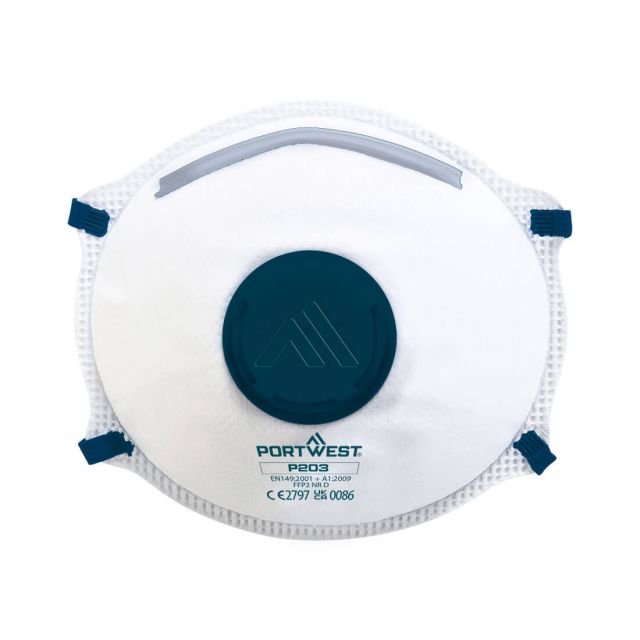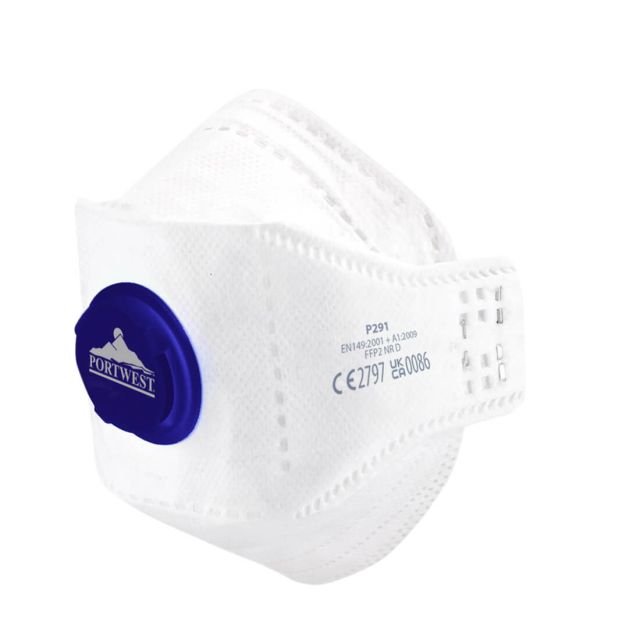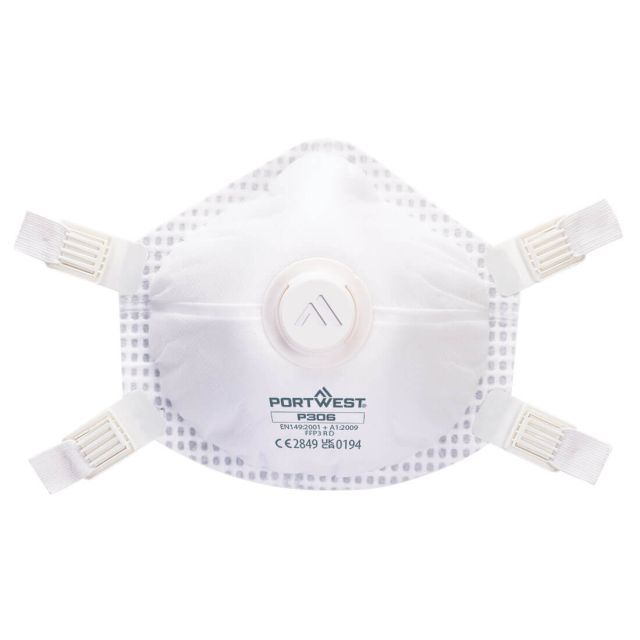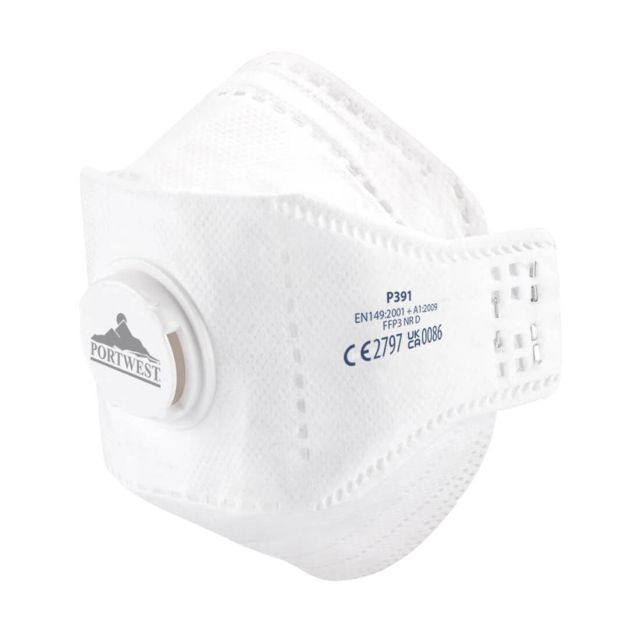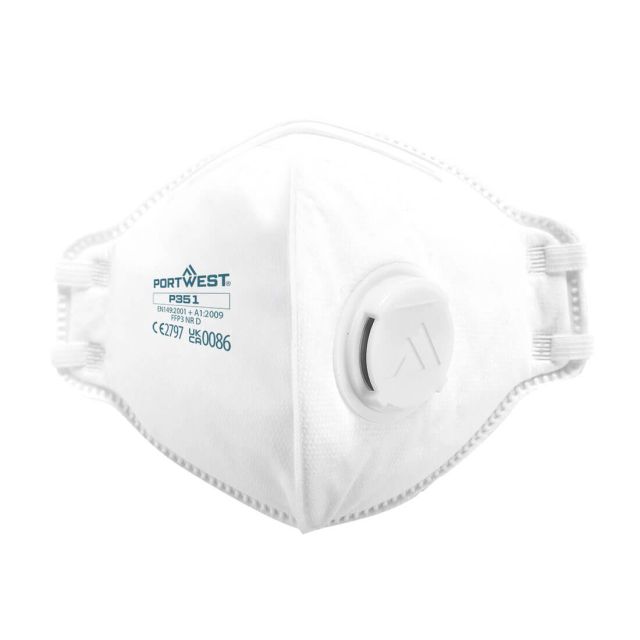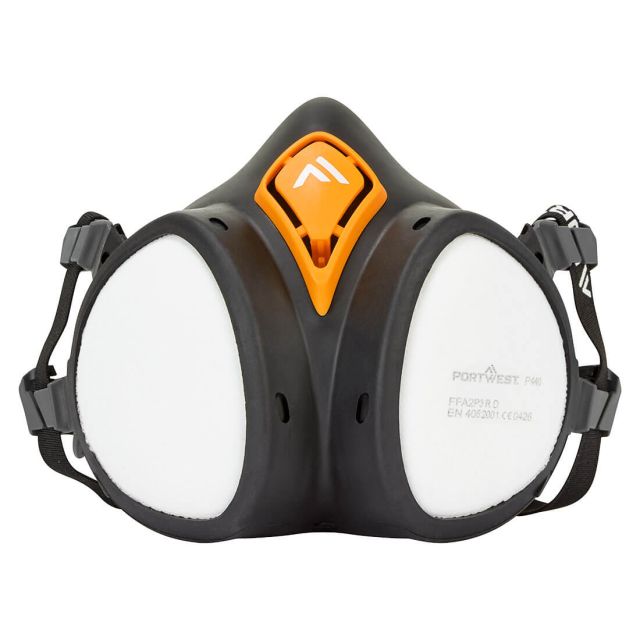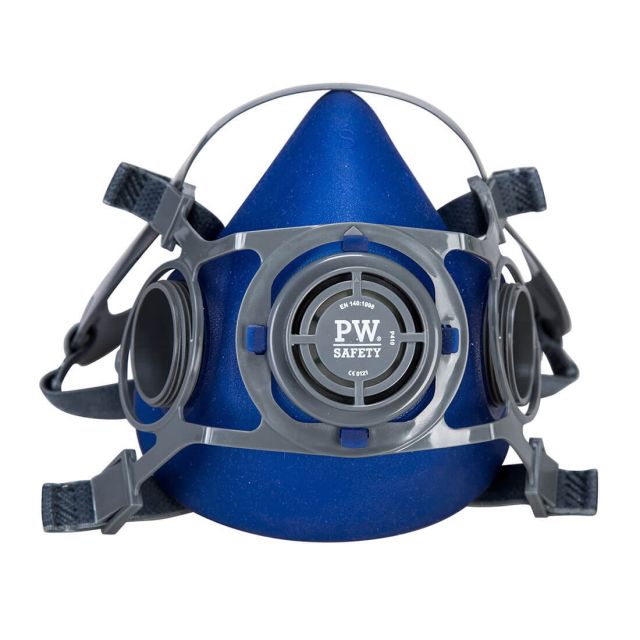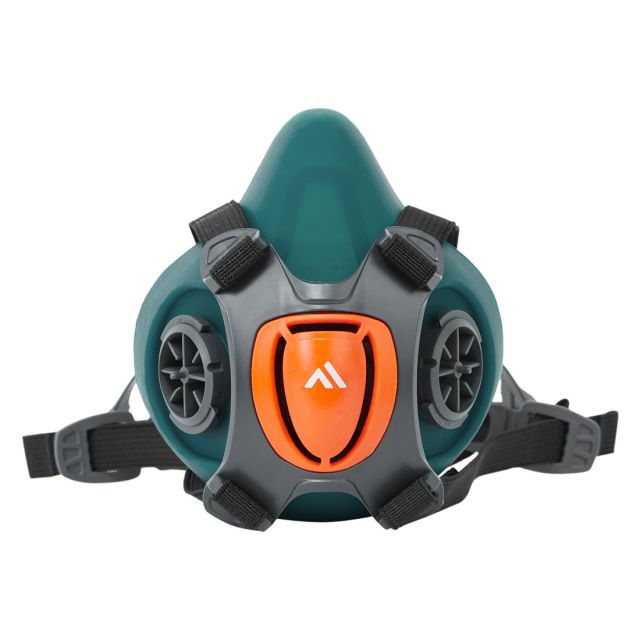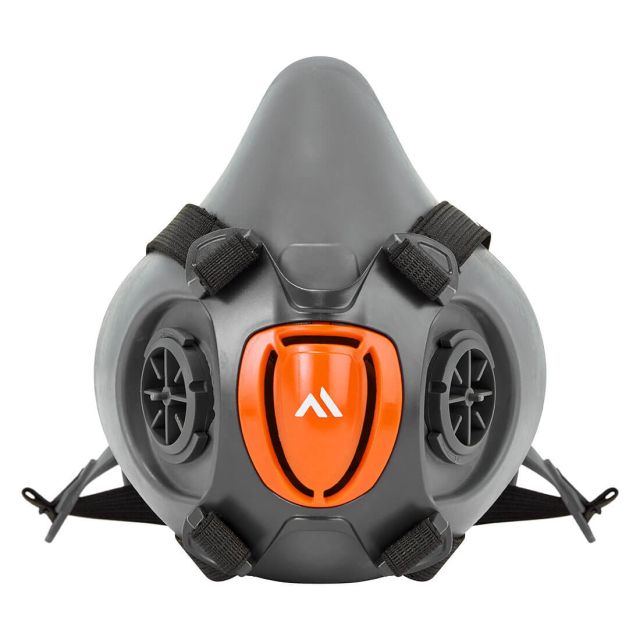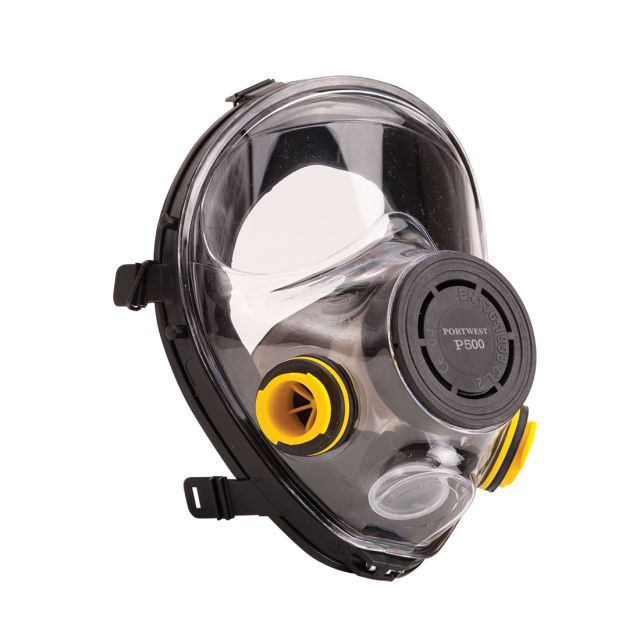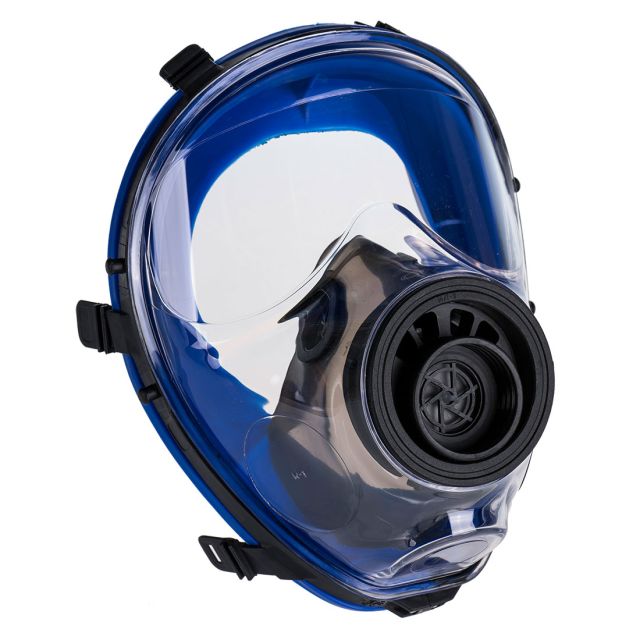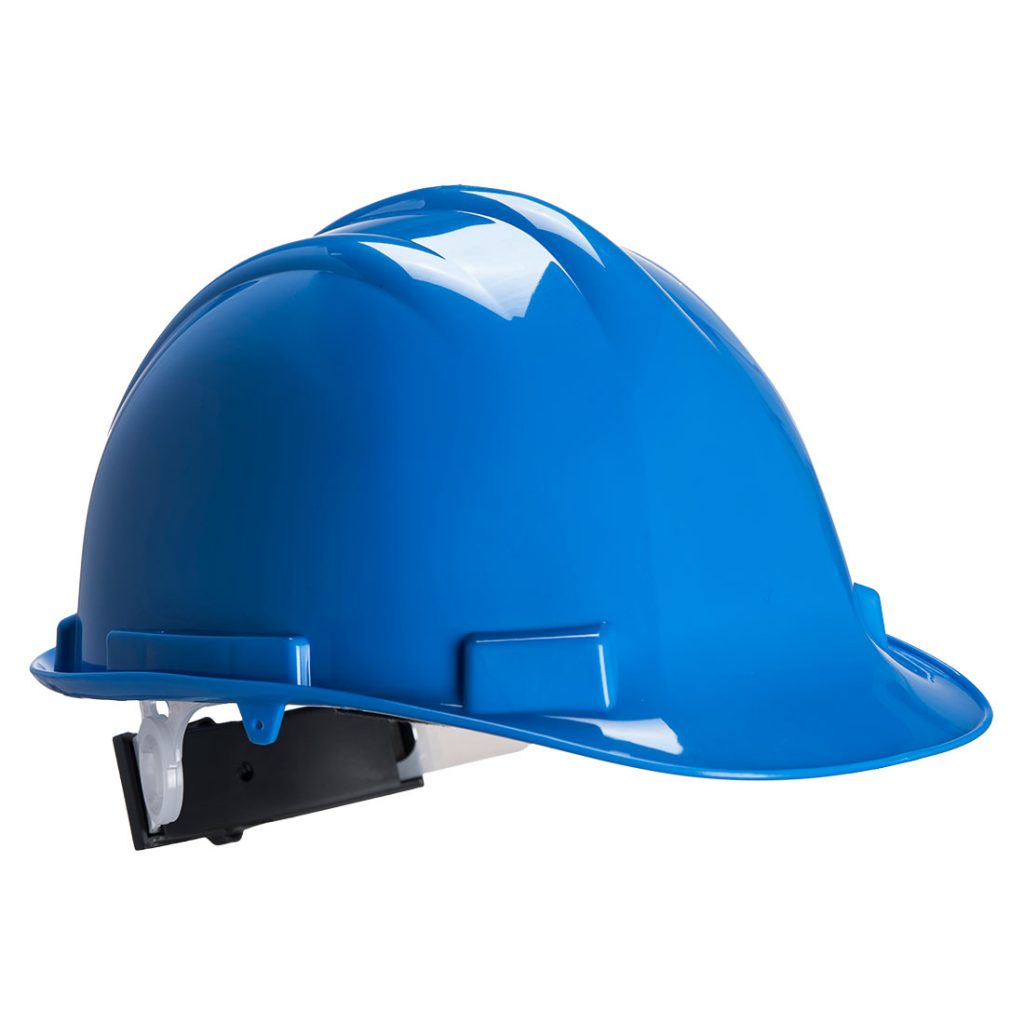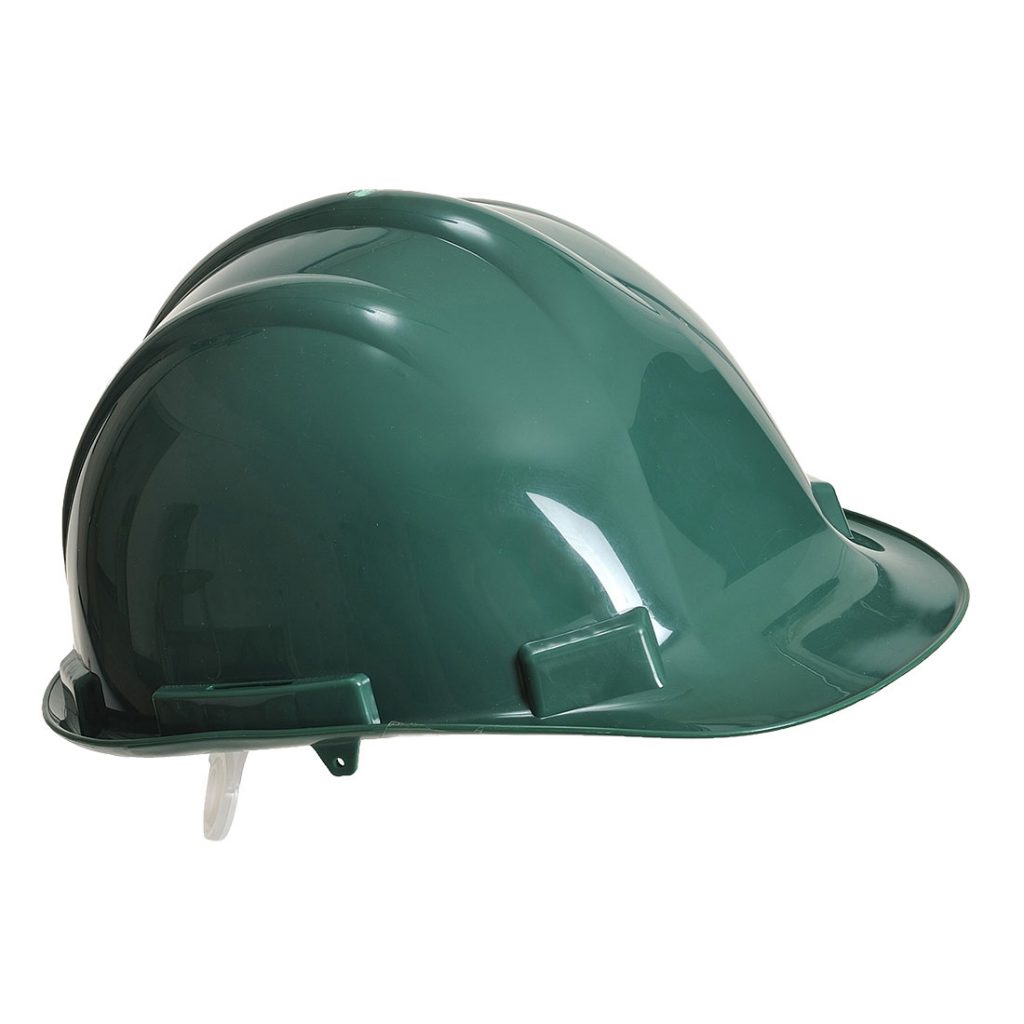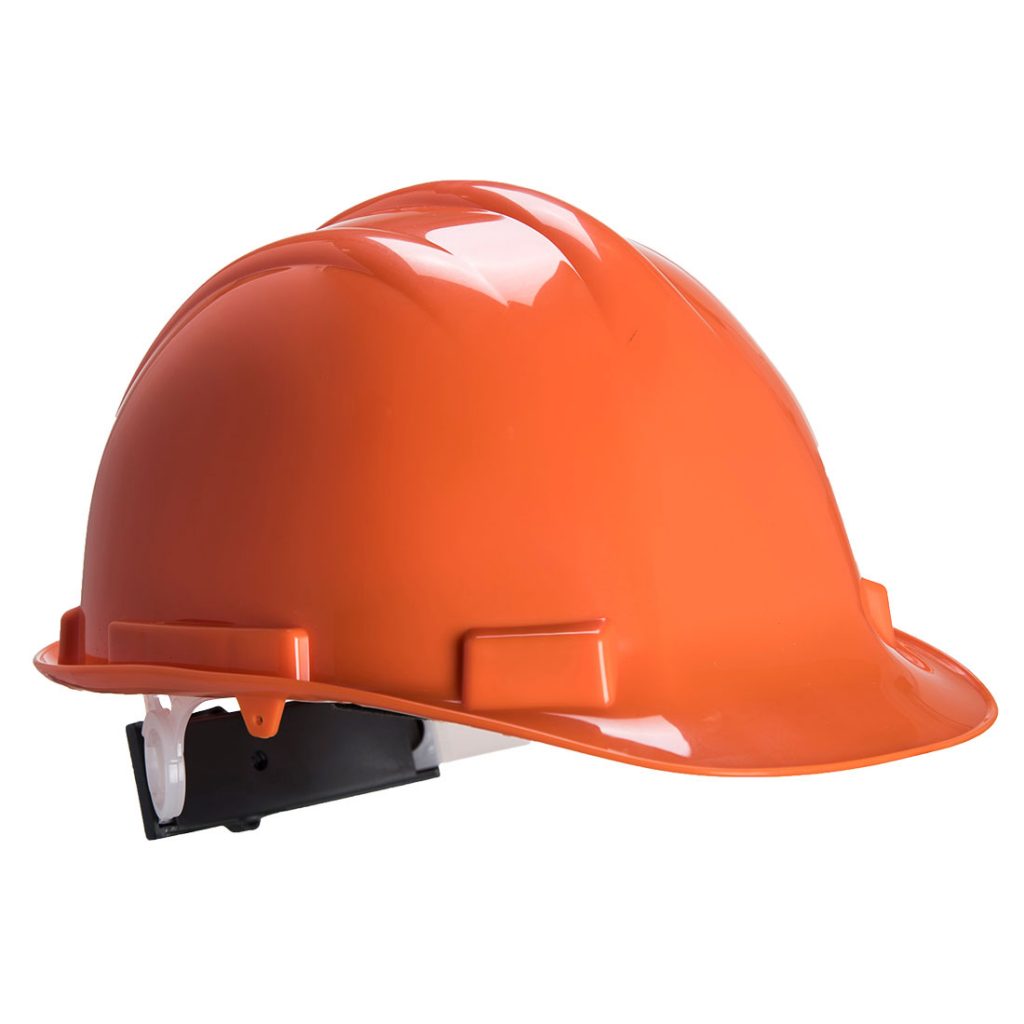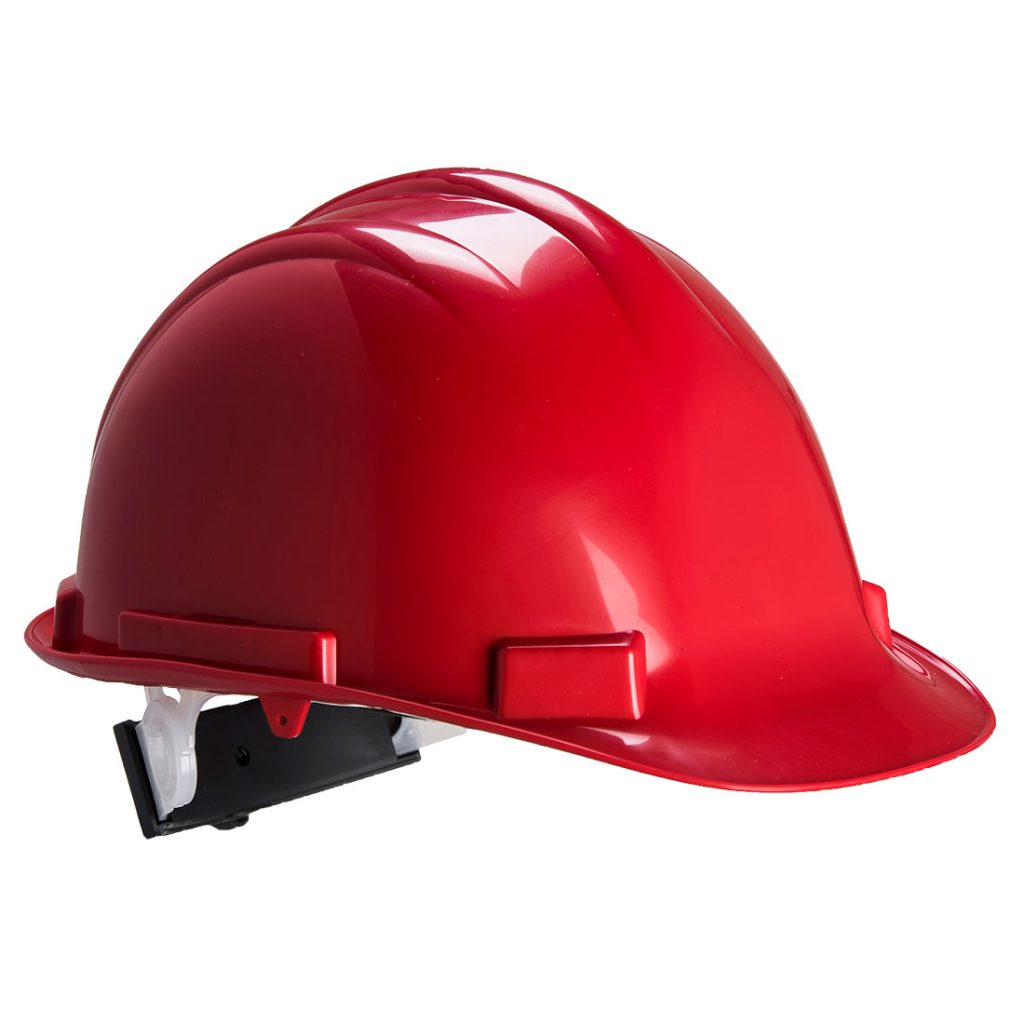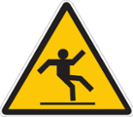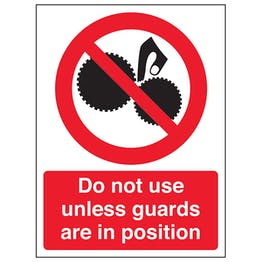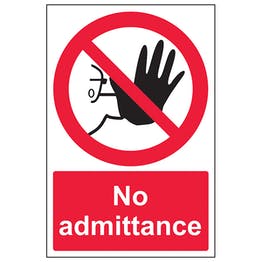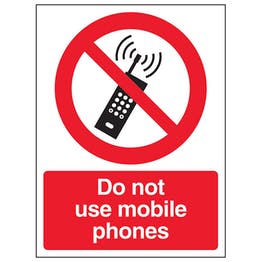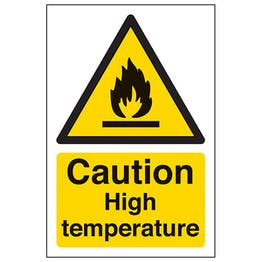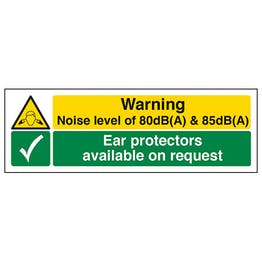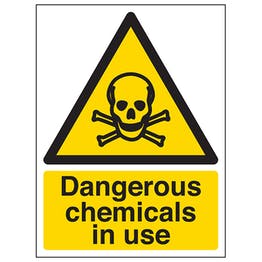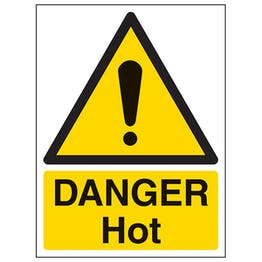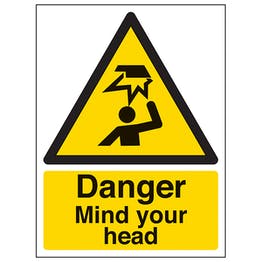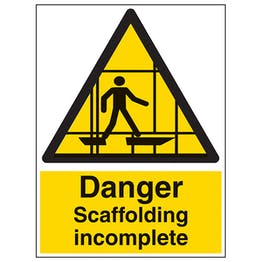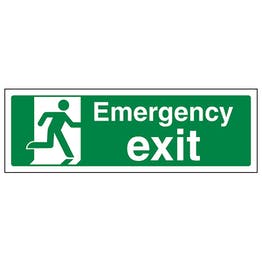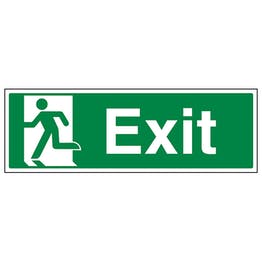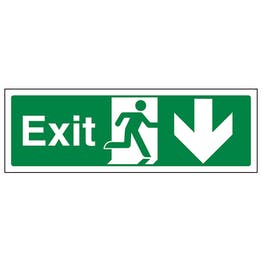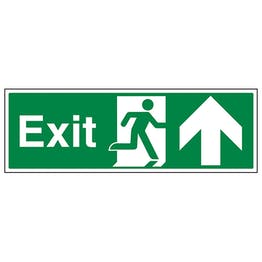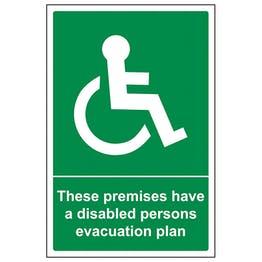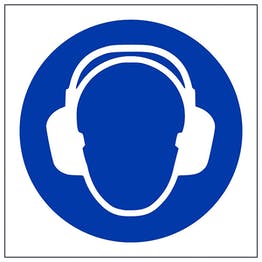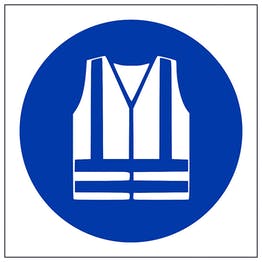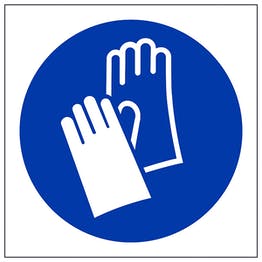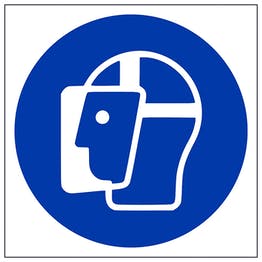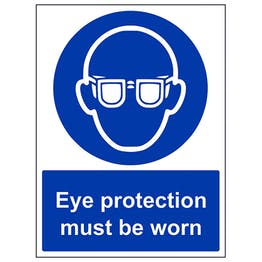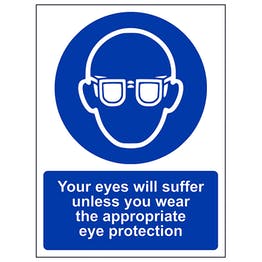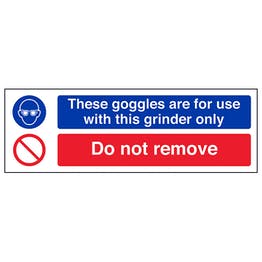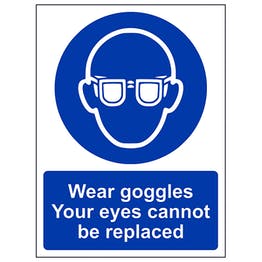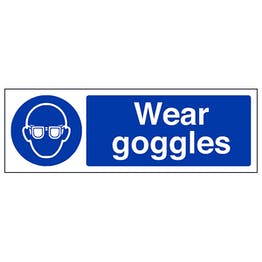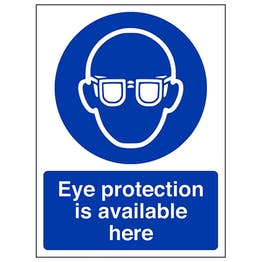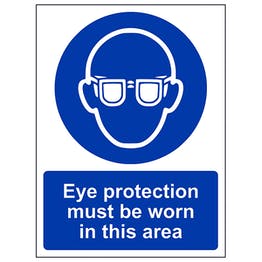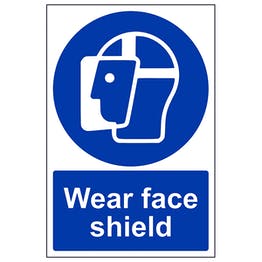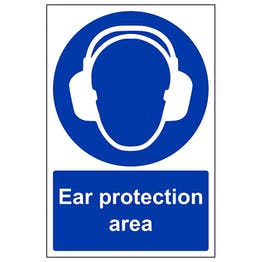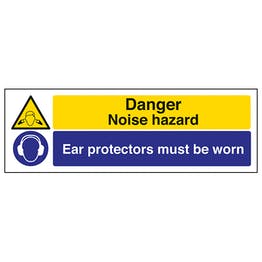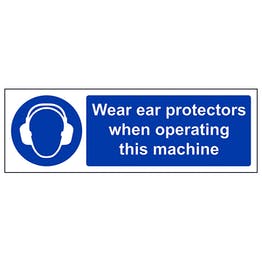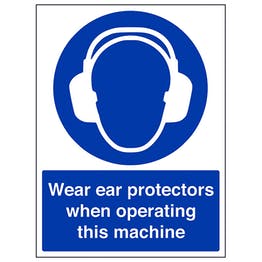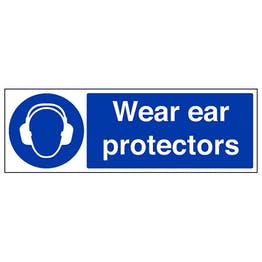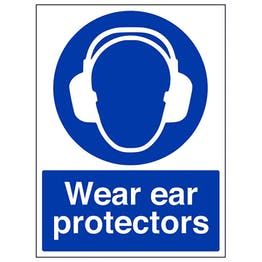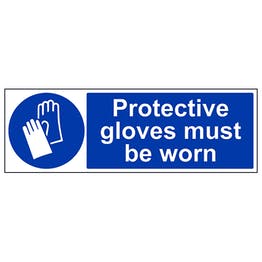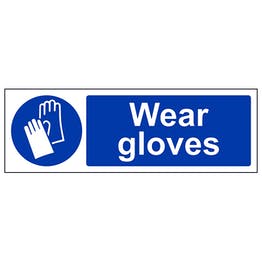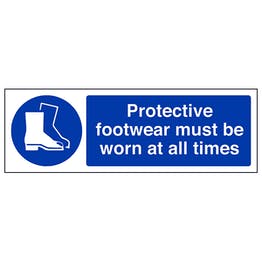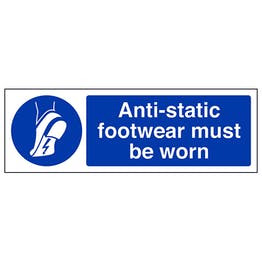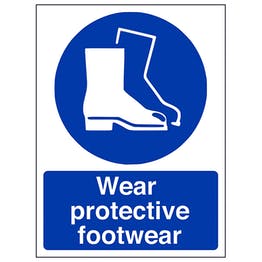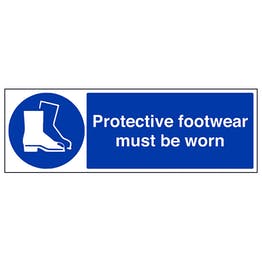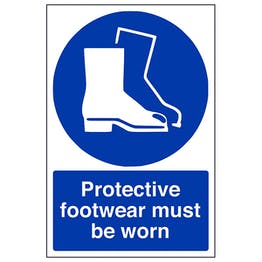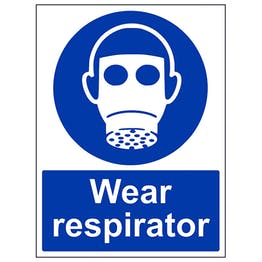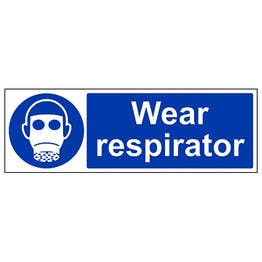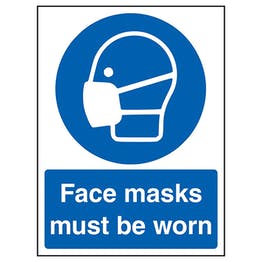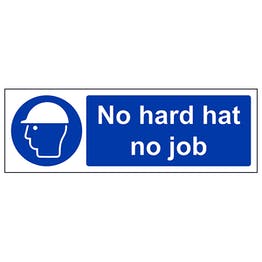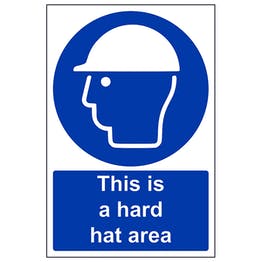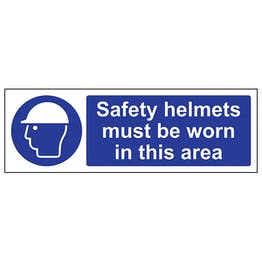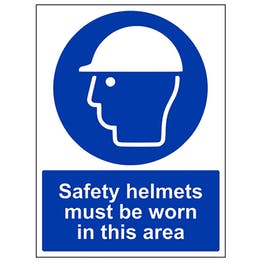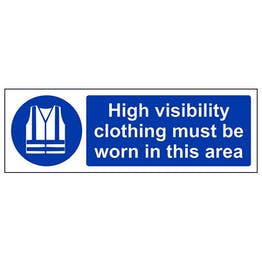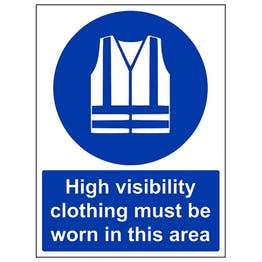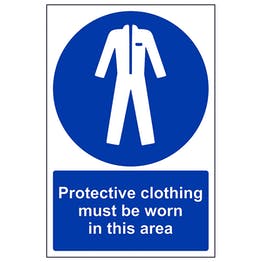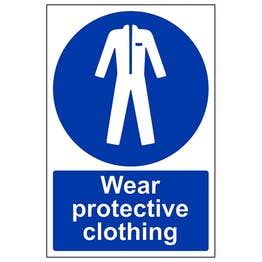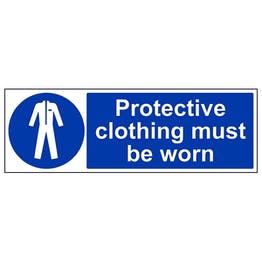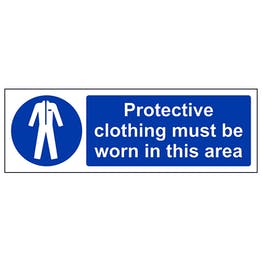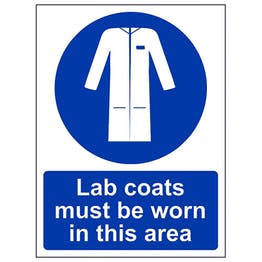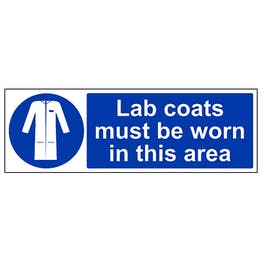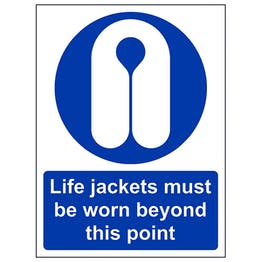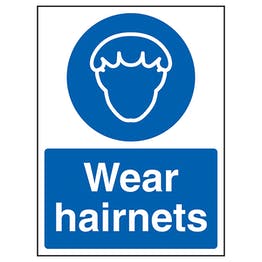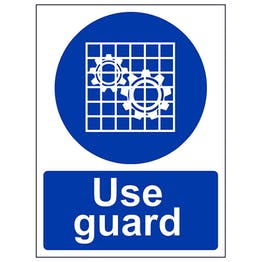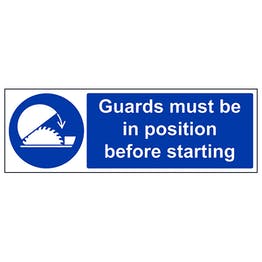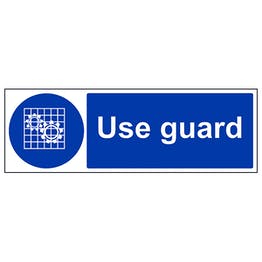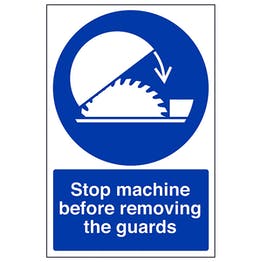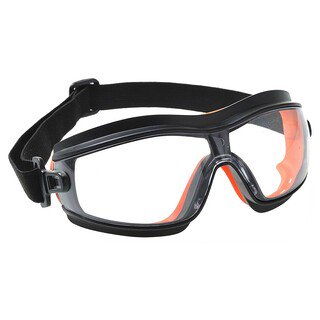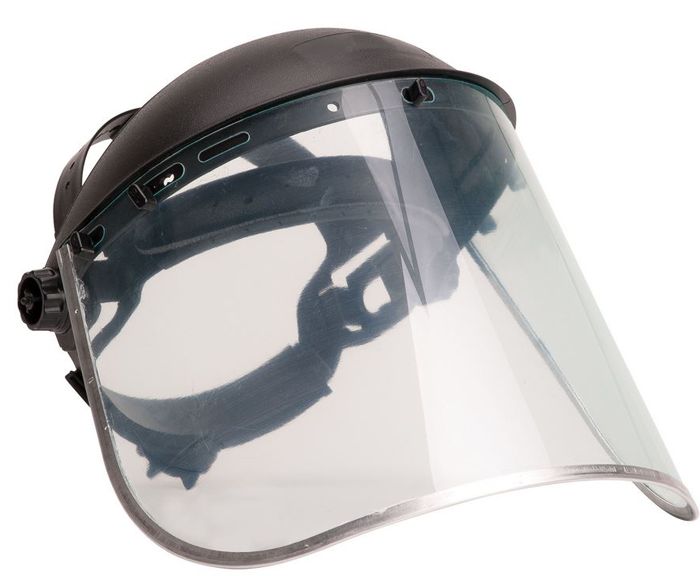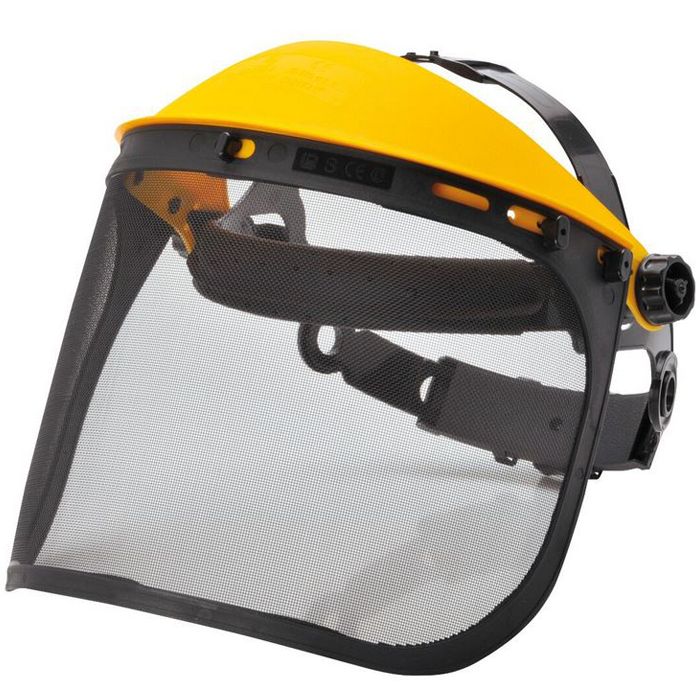Last year we reported on the findings of a BSIF report looking into un-registered retailers selling PPE.
Today, the British Safety Industry Federation (BSIF) has released the results of its latest independent tests (2025), and the findings are nothing short of alarming.
In their comprehensive assessment of personal protective equipment (PPE) procured from non-registered suppliers between December 2023 and December 2024, a staggering 90% of products failed to meet essential safety standards.
A Sharp Rise in PPE Failures
Compared to last year’s report, where 79% of non-member products failed, the situation has worsened significantly. Of the 161 products tested, only 16 met full compliance requirements, leaving 138 products failing critical safety benchmarks. Seven results are still pending, but the trend is already clear—substandard PPE is flooding the UK market.
Key Findings:
- Head Protection (100% failure rate – 6 products): Every helmet tested failed to withstand penetration and shock absorption assessments. This means impacts could break through the outer shell or transfer dangerous force directly to the wearer's head, increasing the risk of traumatic injuries.
- Eye & Face Protection and Fall Protection (100% failure rate – 13 products): None of the tested items provided adequate defence against particle impacts or fall-related stresses. This exposes users to severe risks such as eye injuries from flying debris or catastrophic failure of fall arrest equipment.
- Safety Footwear (86% failure rate – 31 products): A concerning number of safety shoes, often promoted on platforms like TikTok, failed key safety benchmarks. Issues included poor toecap compression resistance, inadequate protection against impact and midsole penetration, insufficient slip resistance, and failure to meet electrical hazard safety standards.
- Hearing Protection (90% failure rate – 28 products): Deficiencies in cushion and headband pressure compromised the protective seal needed to block hazardous noise levels effectively, leaving wearers vulnerable to long-term hearing damage.
- Safety Gloves (95% failure rate – 21 products): These gloves did not deliver on claims related to cut resistance, abrasion durability, or puncture protection. This dramatically increases the likelihood of hand injuries in hazardous environments.
- Hi-Vis Clothing (85% failure rate – 11 products): Many garments failed chromaticity and luminance tests, meaning they were not bright enough to ensure visibility in low-light conditions. This defeats the primary purpose of hi-vis apparel, which is to keep workers seen and safe.
- Respiratory Protective Equipment (RPE) (88% failure rate – 22 products): Tested masks and respirators fell short in filter penetration tests, failing to block hazardous dust and fumes effectively, potentially putting wearers at risk of inhaling dangerous airborne contaminants.
These products failed critical tests, including resistance to impact, compression, abrasion, penetration, and filter effectiveness—posing significant risks to users across industries.
Real Risks Behind the Statistics
Failures weren’t just technicalities; they represented genuine threats to life and limb. From safety helmets unable to withstand impacts to RPE filters that don’t block hazardous dust and fumes, the potential for tragedy is high.
Roy Wilders, BSIF Registered Safety Supplier Scheme Manager, stated:
"The findings are deeply concerning. When protective—and sometimes life-saving—equipment fails to meet standards, it's not just a statistic; it's a potential tragedy waiting to happen."
The Safer Choice: BSIF Registered Safety Suppliers
The contrast with BSIF Registered Safety Suppliers is stark. Of 399 products tested from registered suppliers, 86% passed, and any issues found were promptly rectified. This highlights the effectiveness of stringent quality controls within the BSIF Registered Safety Supplier Scheme.
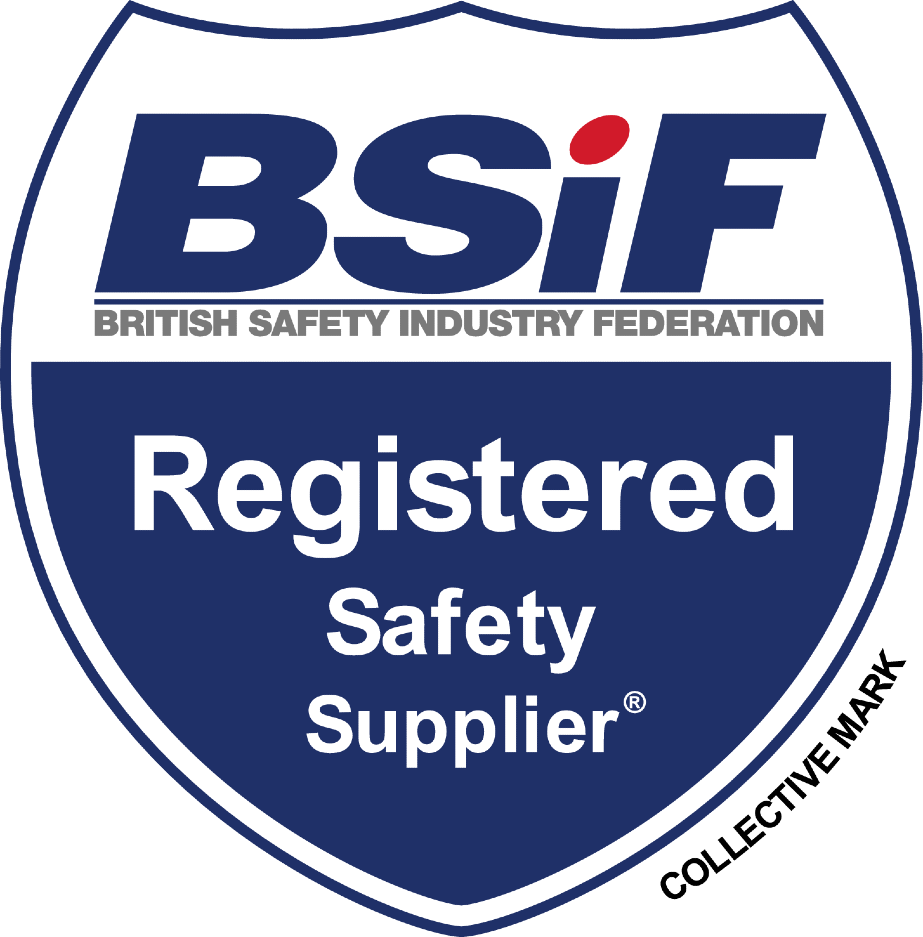
Alan Murray, BSIF CEO, emphasised:
"Our latest test results have once again brought to light a deluge of problem PPE, from substandard safety helmets to safety shoes that fall a long way short of the required standards for keeping wearers safe. Buyers and specifiers must urgently review their procurement processes and consider what assurances they have that the PPE and safety equipment they are being supplied with is fit for purpose."
Protect Your Workforce: Choose Wisely
When safety is on the line, there's no room for compromise. XAMAX® is proud to be a BSIF Registered Safety Supplier. We only source PPE from trusted, compliant manufacturers and distributors who are also BSIF members. This ensures a secure supply chain, giving you peace of mind that the PPE protecting your team meets the highest UK safety standards.
Always look for the BSIF Registered Safety Supplier shield when purchasing PPE. It’s your assurance of quality, compliance, and commitment to safety.
"Remember, anyone can sell safety, but you shouldn't buy safety from just anyone; always check for the BSIF shield." - BSIF
Final Thought
As these test results show, cutting corners on safety can have dire consequences. Don't take unnecessary risks with your workforce's wellbeing. Trust BSIF Registered Safety Suppliers like XAMAX® to provide PPE that performs when it matters most.
Last year we reported on the findings of a BSIF report looking into un-registered retailers selling PPE. Today, the British Safety Industry Federation (BSIF) has released the results of its latest independent tests (2025), and the findings are nothing short of alarming. In their comprehensive assessment of personal protective equipment (PPE) procured from non-registered suppliers […]
Worker safety is essential in industries where there are hazardous airborne particles, chemicals, or gases. Respiratory Protective Equipment (RPE) is crucial for protecting workers from respiratory diseases and long-term health issues. In the United Kingdom, various rules provide clear principles that ensure that workers are adequately protected.
This guide gives a full review of the UK respiratory protection safety requirements, with an emphasis on the legal framework and how to choose the appropriate RPE for your staff.
- Page Contents
- The Legal Framework
- Respiratory Protective Equipment (RPE) Standards
- Choosing the Right Respiratory Protection
- XAMAX®: Your Partner in Respiratory Protection
- Conclusion
The Legal Framework
The legal framework for respiratory protection in the UK is built on a set of regulations intended to ensure worker safety and correct usage of Personal Protective Equipment (PPE).
These regulations require that both companies and employees follow specific guidelines for selecting, using, and maintaining RPE.
Control of Substances Hazardous to Health (CoSHH) Regulations 2002
CoSHH is one of the most important regulations for workplace health and safety. It applies to all organisations where hazardous substances are used. These include protection against chemicals, dust, and fumes, which can harm workers' health if inhaled.
Under CoSHH, employers must do the following:
- Identify what hazardous substances are present in the workplace.
- Assess the risks associated with these substances.
- Control exposure by using the right protective measures, including providing RPE (respiratory protective equipment) to employees.
- Ensure workers are trained to use the equipment properly.
Personal Protective Equipment (PPE) at Work Regulations 1992
The PPE at Work Regulations 1992 require employers to provide suitable protective equipment whenever there are risks to workers' health and safety. For respiratory protection, this means providing the correct RPE based on the hazards identified in the workplace.
Employers must ensure that:
- The RPE provided is appropriate for the type of work and level of risk.
- The equipment is well-maintained and clean.
- Workers are trained to use and care for their RPE properly.
The Management of Health and Safety at Work Regulations 1999
This regulation requires employers to carry out risk assessments for health and safety hazards. It ensures that protective measures are in place and that workers are given the right equipment, training, and supervision.
For respiratory protection, this means:
- Employers must regularly review and update their risk assessments to make sure the right RPE is in use.
- They must train workers on the correct use of RPE and keep an eye on the equipment's condition.
Respiratory Protective Equipment (RPE) Standards
RPE must meet specific UK and European standards. The most common standard is EN 149 for disposable filtering facepieces, which provides three levels of protection: FFP1, FFP2, and FFP3.
- FFP1 masks provide the least protection and are suitable for low levels of dust.
- FFP2 masks offer moderate protection against dust, mists, and fumes.
- FFP3 masks give the highest protection and are often used in more dangerous environments with high levels of harmful dust and particles.
There are also half-face and full-face respirators that must meet EN 140 and EN 136 standards. These provide higher levels of protection and can be fitted with different types of filters based on the substances in the air.
Choosing the Right Respiratory Protection
Choosing the right RPE depends on the risks in the workplace. Employers need to consider factors like the type of substance, how much of it is in the air, and how long the worker will be exposed to it. It's important to choose equipment that fits well and is comfortable for the wearer to ensure they use it correctly.
Workers must also be trained in how to wear and care for their RPE to keep it working properly. For example, a dust mask that doesn’t fit properly won’t give full protection, so fit-testing is essential.
XAMAX®: Your Partner in Respiratory Protection
XAMAX® recognise the importance of providing suitable respiratory protection for your employees. As a BSIF Registered Safety Supplier, we ensure that all of our RPE meets UK safety standards, giving you confidence that your workforce is safe.

We supply a wide range of RPE, from disposable masks to full-face respirators, ensuring that we have a solution for most sectors and risk levels. Our friendly staff can assist you in choosing the right equipment for your requirements, and this blog provides guidance on maintenance and care to make sure your RPE remains in perfect working order.
When you use XAMAX®, you're buying more than just high-quality safety equipment; you also get professional assistance to keep your workers safe.
Conclusion
Knowing and complying to the UK safety regulations for respiratory protection is vital for protecting your employees from dangerous dust, fumes, and gases.
Employers need to conduct regular risk assessments, supply suitable RPE, and ensure employees receive training in its use.
Whether you’re working with low levels of dust or dangerous chemicals, the correct respiratory protection is key to preventing serious health issues.
If you need help choosing the right RPE, XAMAX® is here to support you with our wide range of high-quality products and expert advice.
Worker safety is essential in industries where there are hazardous airborne particles, chemicals, or gases. Respiratory Protective Equipment (RPE) is crucial for protecting workers from respiratory diseases and long-term health issues. In the United Kingdom, various rules provide clear principles that ensure that workers are adequately protected. This guide gives a full review of the […]
A key element of workplace safety is respiratory protection, especially in sectors where employees are exposed to hazardous airborne particles. Wearing the right respiratory protection equipment (RPE) is essential to preventing major respiratory illnesses associated with everything from dust in construction to hazardous substances in manufacturing.
The most significant regulations, classifications, and applications of respiratory protection in many sectors are covered in this guide, giving workers and managers the knowledge they need to ensure a safe work environment.
- Page Contents
- Introduction to Respiratory Protection
- Key UK Regulations for Respiratory Protection
- Types of Respiratory Protection
- Respiratory Protection Ratings Explained
- Applications by Industry
- XAMAX®: Why Choose Us?
- Conclusion
Introduction to Respiratory Protection
Respiratory Protective Equipment (RPE) is essential in workplaces where employees are exposed to airborne hazards such dust, fumes, vapours, and gases.
Proper RPE use can help to prevent long-term health issues such as chronic respiratory diseases, lung cancer, and other major disorders.
Workers and employers can ensure effective protection in any hazardous environment by understanding the relevant legislation and protective ratings.
Key UK Regulations for Respiratory Protection
Several regulations govern the use of respiratory protection in the UK. Employers must comply with these rules to ensure the safety of their workers.
Control of Substances Hazardous to Health (COSHH) Regulations
The COSHH Regulations 2002 are one of the most important frameworks that require employers to control exposure to hazardous substances in the workplace. According to COSHH, employers must:
- Assess the risks: Identify the hazardous substances and evaluate the level of exposure.
- Provide adequate RPE: Ensure that the provided respiratory protection is suitable for the work environment.
- Conduct face fit testing: Tight-fitting respirators must be tested for a proper seal on each employee's face.
- Monitor health: Regular health surveillance is required for workers who may develop lung diseases.
Personal Protective Equipment at Work Regulations 1992
The PPE at Work Regulations 1992 mandate that employers must provide suitable personal protective equipment, including RPE, at no cost to the employee. These regulations also require employers to:
- Ensure that PPE is appropriate for the risks involved.
- Maintain and replace the equipment regularly.
- Train employees on the correct usage and limitations of RPE.
British Standards Institution (BSI) Compliance
BSI is responsible for setting standards for the design and testing of PPE. Respiratory protection must comply with BS EN 149, the UK standard for filtering facepieces (FFP), and other relevant standards.
Employers should ensure that all RPE is certified by BSI for protection against specific hazards.
Fit2Fit Accreditation for Face Fit Testing
The Fit2Fit accreditation ensures that those performing face fit tests for tight-fitting respirators are competent. Testing ensures the mask properly seals to the wearer’s face, reducing the risk of inhaling contaminants.
Types of Respiratory Protection
There are several types of RPE, each suited for different hazards and industries. Choosing the right one depends on the level of airborne hazard and the type of work performed.
Disposable Dust Masks
These masks, also known as filtering facepieces (FFP), provide protection against dust and non-toxic particles. They are common in construction and light industrial work where low-level dust exposure occurs.
Materials: Typically made from lightweight fabric with integrated particulate filters.
Half-Face Respirators
Half-face respirators cover the nose and mouth, offering protection against dust, fumes, vapours, and some gases. These are suitable for industries dealing with more hazardous airborne particles, such as metalworking or chemical processing.
Materials: Made from silicone or rubber for durability, with replaceable filters.
Full-Face Respirators
Full-face respirators provide a higher level of protection, covering the entire face to protect both the respiratory system and the eyes from exposure to harmful substances. Commonly used in hazardous environments such as chemical plants.
Materials: Made from durable rubber or silicone with replaceable filters.
Powered Air-Purifying Respirators (PAPR)
PAPRs use a battery-powered fan to draw air through filters. These are often used in environments where workers are exposed to toxic fumes, dust, or vapours for extended periods.
Materials: Lightweight and designed for long-term use with advanced filtration systems.
Self-Contained Breathing Apparatus (SCBA)
SCBAs provide breathable air from a tank and are used in environments with little or no oxygen, such as confined spaces or emergency response situations.
Materials: High-strength materials to withstand extreme conditions.
Respiratory Protection Ratings Explained
The level of protection provided by respiratory equipment is measured using specific ratings and assigned protection factors (APF).
FFP1, FFP2, and FFP3 Ratings
These ratings apply to filtering facepieces and represent the level of protection they offer against particulate hazards:
- FFP1: Filters at least 80% of airborne particles. Suitable for light dust environments, such as basic construction tasks.
- FFP2: Filters at least 94% of airborne particles. Suitable for environments with moderate hazards, such as sanding and plastering.
- FFP3: Filters at least 99% of airborne particles. Recommended for high-hazard environments, such as working with asbestos or toxic chemical fumes.
APF (Assigned Protection Factor)
The Assigned Protection Factor (APF) is an important measure for determining the amount of protection provided by respiratory protective equipment (RPE). APF ratings indicate how well the respirator reduces exposure to hazardous substances when worn correctly. The higher the APF, the more effective the protection.
For example, an APF of 10 means that the respirator reduces the user’s exposure to airborne contaminants to 1/10th of the concentration in the surrounding air. An APF of 20 reduces it to 1/20th, and so on. Knowing the APF of a respirator allows employers and workers to make informed decisions about whether the equipment is suitable for the level of hazards present in the workplace.
In the UK, the Health and Safety Executive (HSE) provides guidelines on selecting respirators with appropriate APF levels for different hazardous environments. Different types of RPE, such as filtering facepieces, half masks, and full-face masks, all have varying APF values. It's essential to refer to these ratings when assessing the suitability of respiratory protection for specific tasks.
Applications by Industry
Different industries require different types of respiratory protection depending on the specific hazards present. Here’s a breakdown of common industries and the type of respiratory protection needed:
Construction
Construction workers are often exposed to dust, fumes, and other airborne particles from materials like concrete, brick, and asbestos. FFP3 masks are typically required to protect against these hazards.
Regular fit testing and maintenance are critical to ensure continued protection.
Manufacturing
In industries like metalworking, painting, and chemical processing, workers may be exposed to hazardous fumes and vapours.
Half-face and full-face respirators with appropriate filters are essential to protect workers from harmful gases and chemicals.
Agriculture
Farmers and agricultural workers face risks from dust, pesticides, and animal dander. Disposable FFP2 or FFP3 masks are often used to protect against these particulates, while half-face respirators are useful for chemical applications.
Automotive and Engineering
Workers in automotive repair and engineering are often exposed to dust, solvents, and other chemicals.
Half-face respirators with P2 or P3 filters offer effective protection from inhaling dangerous fumes and particles during tasks such as sanding, welding, and painting.
Mining and Quarrying
Workers in the mining industry are exposed to high levels of dust and sometimes toxic gases. Full-face respirators and PAPRs are commonly used to provide sufficient protection in these hazardous environments.
Woodworking
In woodworking, wood dust is the primary hazard. FFP2 or FFP3 dust masks provide essential protection for workers cutting, sanding, or shaping wood, as these tasks generate fine particulate matter that can be harmful to the lungs.
XAMAX®: Why Choose Us?
When it comes to respiratory protection, you can trust XAMAX® to supply the highest quality PPE that meets UK safety standards.
As a BSIF registered safety supplier, we ensure that every product complies with regulations and is designed to provide maximum protection for your workforce.
Whether you're in construction, manufacturing, or any other industry, XAMAX® offers a wide range of respiratory protection to suit your specific needs.
Protect your team with our industry-leading respiratory protective equipment. Explore our full range of RPE or request a callback for expert guidance on choosing the right RPE for your business.
Conclusion
Respiratory protection is a crucial part of workplace safety, especially in sectors where workers are exposed to air-borne contaminants like dust, fumes, vapours, or gases. Understanding the many forms of RPE, regulatory demands, and appropriate protection ratings enables companies and employees to make educated decisions about their safety.
Employers must comply with requirements set by UK legislation such as COSHH and PPE at Work in order provide proper protection to their employees. Companies can significantly reduce the risk of respiratory infections among their employees by selecting the appropriate respirator, conducting face fit tests, and ensuring regular maintenance.
Whether you need basic dust masks for light construction or advanced PAPRs for chemical plants, selecting the correct RPE is crucial for worker health and safety. Always ensure that your equipment complies with the highest safety standards and is suited for your industry’s specific needs.
XAMAX® are committed to providing BSIF-certified respiratory protection products that meet UK safety standards. Our range includes everything from disposable masks to full-face respirators, ensuring that you have the right protection for any job.
A key element of workplace safety is respiratory protection, especially in sectors where employees are exposed to hazardous airborne particles. Wearing the right respiratory protection equipment (RPE) is essential to preventing major respiratory illnesses associated with everything from dust in construction to hazardous substances in manufacturing. The most significant regulations, classifications, and applications of respiratory […]
The safety footwear requirements were considerably updated in 2022, most notably in the EN ISO 20345:2022 and EN ISO 20347:2022 standards. These changes reflect major advances in ensuring worker safety across a variety of sectors. Understanding these developments is critical for employers, organisations, and individuals responsible for workplace safety to maintain compliance and protect employees' well-being.
This article will walk you through the important changes to safety footwear regulations, how they affect both employers and employees, and how to make sure your footwear meets the most recent standards.
- Page Contents
- Overview of the 2022 Safety Footwear Standards
- Types of Footwear Covered by the 2022 Standards
- Key UK Regulations for Safety Footwear
- Key Changes in EN ISO 20345:2022 and EN ISO 20347:2022
- New Markings and Marking Changes
- How to Ensure Compliance with the New Standards
- Applications by Industry
- Why Choose XAMAX® for Your Safety Footwear?
- Conclusion
Overview of the 2022 Safety Footwear Standards
The EN ISO 20345 and EN ISO 20347 standards are essential to establishing the minimum requirements for safety footwear. They encompass everything from protection features to testing regulations, ensuring that industrial footwear minimises worker injuries.
The EN ISO 20345:2022 standard is largely applicable to footwear designed to provide protection in high-risk areas (such as construction and engineering). EN ISO 20347:2022, on the other hand, focusses on occupational footwear in which high-level protection (such as toe caps) is optional but some protection (such as slip resistance) is necessary.
Here are the most significant modifications in these standards from the previous editions (EN ISO 20345:2011 and EN ISO 20347:2012):
Types of Footwear Covered by the 2022 Standards
- Safety Boots: Footwear designed for industries with a high risk of impact or compression injuries, such as construction, manufacturing, and mining.
- Safety Shoes: Typically used in lower-risk environments like warehousing, these offer toe protection and slip resistance.
- Safety Trainers: Lightweight footwear ideal for roles where mobility is key, such as in logistics or maintenance.
- Wellington Boots: Provide protection in wet or chemical-heavy environments like agriculture or fisheries, with resistance to liquids and chemicals.
Each type of footwear must meet specific EN ISO 20345:2022 or EN ISO 20347:2022 ratings depending on the work environment.
Key UK Regulations for Safety Footwear
Employers must provide personal protection equipment (PPE) such as safety footwear to employees who are exposed to health or safety dangers, according to UK legislation. Among these are the Personal Protective Equipment at Work Regulations of 1992, which align to European standards and stipulate that employers ensure that PPE is suitable, well-maintained, and provided at no charge when required.
With the 2022 updates, UK safety standards now reflect the following changes in PPE footwear:
Key Changes in EN ISO 20345:2022 and EN ISO 20347:2022
New Classification for Slip Resistance: The new standards provide enhanced guidelines for slip resistance, now a mandatory requirement for all certified footwear. Testing on both ceramic tiles (SRA) and steel plates with glycerol (SRB) is included to simulate various working environments. Footwear must pass tests for both to meet the SRC designation, which applies to all high-slip risk industries.
Breathability and Comfort: Worker comfort has been emphasised in the latest regulations. The EN ISO 20345:2022 standard includes improved guidelines on breathability, moisture management, and overall comfort, making long shifts in safety boots more manageable, reducing fatigue, and increasing worker productivity.
Impact Resistance of Toe Caps: Toe caps must still withstand a 200-Joule impact (equivalent to dropping a 20 kg weight from a height of 1 meter). However, composite toe caps (made from non-metal materials) are now more widely tested under varying temperatures, ensuring that safety boots perform equally well in extreme hot or cold conditions.
Penetration Resistance: Footwear must meet updated penetration resistance standards, ensuring that soles protect against sharp objects in industrial settings. Composite and steel midsole protections must undergo strict testing to prevent penetration by sharp objects like nails, glass, or debris on site. This is particularly relevant for construction and demolition industries.
Electrical and Anti-Static Properties: In high-risk sectors like electronics and energy, regulations for electrical resistance and anti-static properties have been tightened. The new standards now include more stringent tests to ensure footwear protects against electrostatic discharge (ESD) or electrical shocks.
Heat and Cold Resistance: The EN ISO 20345:2022 standard now provides more detailed guidelines on the HI (heat insulation) and CI (cold insulation) ratings, ensuring footwear can withstand a range of environmental conditions. This is especially relevant for industries such as welding, foundries, and outdoor work.
Sustainability and Materials: The 2022 standards emphasise sustainability, encouraging manufacturers to use eco-friendly and recyclable materials while maintaining high levels of protection. This focus is a reflection of the industry's drive towards more sustainable manufacturing practices.
New Markings and Marking Changes
With regulation changes comes new safety claims and new markings to suit the advancements in safety footwear technology:
| Icon | Description |
|---|---|
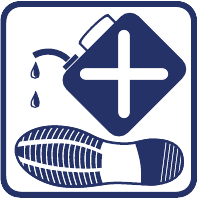 | FO (Fuel Oil Resistance): This marking indicates that the outsole material has been tested for resistance to fuel oils. This is no longer part of the Shortcut codes and must be marked separatley |
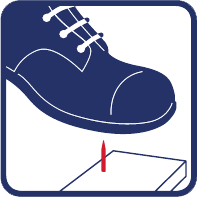 | P (Penetration Resistance) is now split across 3 codes: P - Perforation resistance metallic. Resistance to sole perforation of nails and sharp objects. Incorporating a metallic perforation resistant insert. PL - Perforation resistance non-metallic (LARGE). Resistance to perforation of nails. Incorporating a non-metallic Perforation resistant insert, tested with a 4.5mm test nail. For general end use where nails may be present. PS - Perforation resistance non-metallic (SMALL). Resistance to perforation of nails. Incorporating a non-metallic Perforation resistant insert, tested with a 3mm test nail. Intended for specialist uses where there is a higher likelyhood of encountering nails or likelyhood of encountering narrower nails. |
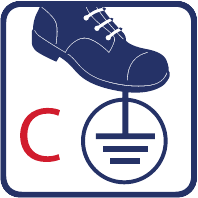 | C (Partially Conductive). The terminology has been changed from “Conductive”, to prevent confusion with claims associated with live electrical working. |
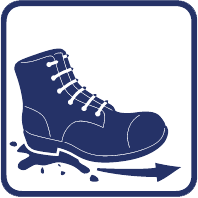 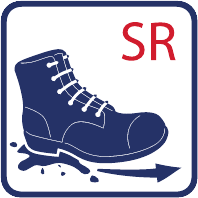 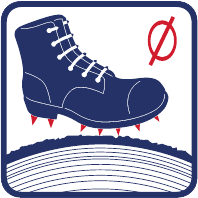 | SRA, SRB, SRC (Slip Resistance Ratings) are not mandatory. Slip resistance on tiled floor surface with Sodium Lauryl sulphate (soapy water) lubricant, tested at both the heel and forepart. No additional marking is applied. SR - Slip resistance on the tiled floor surface with glycerol lubricant, tested at both the heel and forepart. The steel floor surface is no longer used in testing. Ø - Slip resistance properties have not been achieved but the outsole includes specialist features such as spikes for logging or heavy cleats for use in soft and loose ground. |
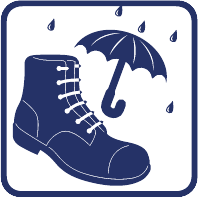 | WPA (Water Resistance): Formerly "WRU" indicates that the footwear has water-resistant uppers, meaning the material used for the upper part of the footwear can resist water penetration. This feature is important for workers in wet or damp environments, such as those in outdoor construction or maintenance roles, where keeping the feet dry is critical to avoid discomfort and potential health risks such as trench foot. |
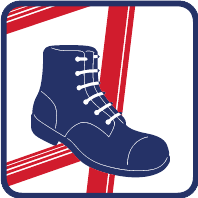 | LG - A new safety claim "ladder grip" indicates that the sole is designed with patterning in the waist area to conform to the rungs of a ladder. |
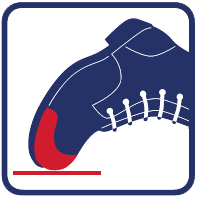 | SC - A new claim "Scuff cap" indicates that the footwear includes an additional overlay material in the toe area offering abrasion resistance during kneeling activities. |
How to Ensure Compliance with the New Standards
Employers should review their current stock of safety footwear and ensure that it complies with the EN ISO 20345:2022 or EN ISO 20347:2022 standards.
Footwear should be inspected regularly for wear and tear, and employees should be trained to understand the importance of choosing footwear based on the specific hazards they face on-site.
Applications by Industry
The updates to these standards are designed to address industry-specific risks:
- Construction: Focus on impact and penetration resistance, ensuring that all footwear meets S3 standards with toe cap protection and penetration resistance.
- Engineering: Higher standards for electrical resistance and protection against sharp objects, with composite and steel options now more rigorously tested.
- Logistics and Warehousing: Emphasis on slip resistance and lightweight comfort, with composite toe caps offering protection without the bulk of steel.
- Agriculture and Fisheries: Increased focus on waterproofing, chemical resistance, and thermal insulation to protect workers in wet environments.
Why Choose XAMAX® for Your Safety Footwear?
As a BSiF Registered Safety Supplier, XAMAX® ensures that every pair of safety footwear we supply complies with the latest UK and European standards. We pride ourselves on providing safety boots, shoes, and trainers that meet or exceed the EN ISO 20345:2022 and EN ISO 20347:2022 standards, so your team gets maximum protection in any work environment.
Whether you need steel toe caps for heavy industry or lightweight composite safety trainers for logistics, we have the perfect solution for your workforce.
Browse our range of compliant safety footwear or contact our team to discuss your PPE needs.
Conclusion
The 2022 updates to safety footwear regulations bring essential changes to protect workers across various industries.
By understanding the requirements of EN ISO 20345:2022 and EN ISO 20347:2022, you can ensure that your safety footwear meets the latest standards, providing maximum protection and comfort.
From improved slip resistance to more stringent electrical safety standards, these updates highlight the importance of choosing the right footwear for the job.
Stay compliant, protect your workers, and choose XAMAX® for all your safety footwear needs.
The safety footwear requirements were considerably updated in 2022, most notably in the EN ISO 20345:2022 and EN ISO 20347:2022 standards. These changes reflect major advances in ensuring worker safety across a variety of sectors. Understanding these developments is critical for employers, organisations, and individuals responsible for workplace safety to maintain compliance and protect employees’ […]
Safety footwear is crucial for protecting workers from injuries at work, particularly in high-risk industries such as construction, engineering, and manufacturing. In the UK, strict safety standards exist to ensure footwear meets specific criteria for protection.
This article covers the key standards and safety ratings that determine whether footwear is safe to wear in the workplace and conforms with UK legislation.
- Page Contents
- The Importance of UK Safety Standards for Footwear
- Key UK Regulations for Safety Footwear
- Key Requirements of UK Safety Footwear Regulations
- Testing and Certification for Compliance
- XAMAX®: Your Trusted Partner for Safety Footwear
- Conclusion
The Importance of UK Safety Standards for Footwear
UK law is very clear when it comes to worker safety. The right footwear can prevent injuries that might otherwise result in lost time at work, long-term health problems, or even worse.
Safety boots are designed to protect workers from common hazards, such as heavy objects, sharp materials, and slippery floors. To ensure the right level of protection, the UK enforces certain safety standards for work boots and shoes.
Key UK Regulations for Safety Footwear
EN ISO 20345:2011
This is the main safety footwear standard in the UK, and it applies to all safety boots and shoes.
It says that footwear should protect the toes from impact (with a minimum 200-joule protection level), prevent foot punctures, and meet other specific requirements based on the workplace environment. This standard ensures that footwear provides a basic level of protection that is consistent across industries.
Personal Protective Equipment at Work Regulations 1992 (PPEWR 1992)
According to this regulation, employers must give their workers proper PPE, including safety footwear, without charge, when there are risks to health or safety in the workplace.
The footwear must be appropriate for the task at hand, properly fit the wearer, and provide enough protection for the hazards they face.
BSI (British Standards Institution) Compliance
The British Standards Institution (BSI) sets the bar for quality in the UK, and when it comes to safety footwear, BSI works with manufacturers to make sure the products meet required safety standards.
BSI compliance means that safety footwear has been independently tested and certified, giving employers peace of mind that the footwear meets safety regulations.
HSE Guidelines
The Health and Safety Executive (HSE) is the body responsible for enforcing workplace safety laws in the UK. HSE provides guidelines to help employers choose and provide the right safety footwear for their workers.
They also check that businesses are following the rules, conducting inspections, and investigating incidents. Failure to meet HSE standards can lead to fines or prosecution, so it’s essential to follow their advice.
Key Requirements of UK Safety Footwear Regulations
UK safety footwear regulations are strict about the level of protection safety boots must offer. The following are the key features required by law:
- Toe Protection (200-Joule Impact): Safety footwear that has toe protection must withstand the impact of 200 joules. That’s roughly the same as a heavy object, like a hammer or a brick, falling from height onto the foot. Any footwear with toe caps must meet this requirement.
- Slip Resistance: Footwear must also be slip-resistant to prevent accidents on surfaces like tiles, wet steel, or greasy floors. There are three ratings for slip resistance: SRA, SRB, and SRC, with SRC being the highest rating. Employers must select the right level of slip resistance depending on the workplace environment.
- Penetration Resistance: To prevent injuries from sharp objects, some safety boots have penetration-resistant midsoles. This feature is important on construction sites or anywhere with nails, scrap metal, or sharp tools on the floor.
- Water Resistance: In industries where workers are exposed to wet conditions, safety footwear must provide water resistance. This protects workers from discomfort and health problems caused by wet feet.
- Heat and Cold Insulation: Some work environments require extra protection from extreme temperatures. Footwear with heat or cold insulation (marked as "HI" for heat and "CI" for cold) helps keep workers comfortable and safe.
- Fuel and Oil Resistance: For workers in industries like automotive or chemical processing, the soles of their footwear need to resist fuel, oil, and other harmful chemicals. Boots marked with "FO" provide this type of resistance.
- Electrical Resistance: Workers exposed to electrical hazards need safety footwear that protects against electrical shock. Boots marked "I" (for insulation) or "ESD" (Electrostatic Discharge) are designed to prevent the buildup of static electricity or shield workers from electric shock.
You can learn more about the specific safety footwear ratings and codes associated with them in our Guide to Safety Footwear Ratings.
Testing and Certification for Compliance
Before any safety footwear can be sold in the UK, it must be rigorously tested to meet the requirements of EN ISO 20345:2011. Once a pair of boots has passed these tests, they are given a CE mark, proving that they meet all European safety standards.
In addition, buying from a BSiF Registered Safety Supplier ensures that the safety boots you purchase come from a trusted source, giving you the reassurance that they are compliant with UK regulations.
XAMAX®: Your Trusted Partner for Safety Footwear
When it comes to choosing safety footwear, compliance with UK safety standards is non-negotiable. As a BSiF Registered Safety Supplier, XAMAX® supplies only high-quality, certified footwear that meets EN ISO 20345:2011 standards.
Our range includes everything from steel-toe boots to waterproof wellingtons, ensuring protection across various industries. We work closely with our customers to provide footwear solutions that fit specific job requirements, always focusing on both safety and comfort.
We pride ourselves on being more than just a PPE supplier. We're a trusted partner that helps businesses protect their workers by offering a wide range of compliant safety footwear.
Conclusion
Understanding the UK safety standards for protective footwear is crucial for businesses and workers alike.
From preventing foot injuries to protecting against slips, sharp objects, and electric hazards, safety boots are a must in many workplaces.
By ensuring compliance with UK regulations and choosing the right protection levels, employers can create a safer work environment and reduce the risk of accidents.
XAMAX® provides reliable, compliant safety footwear to businesses across all industries. Choose us for your PPE needs, and rest assured that your team is equipped with the best.
Safety footwear is crucial for protecting workers from injuries at work, particularly in high-risk industries such as construction, engineering, and manufacturing. In the UK, strict safety standards exist to ensure footwear meets specific criteria for protection. This article covers the key standards and safety ratings that determine whether footwear is safe to wear in the workplace and […]
A PPE compliance audit for safety footwear is a must to ensure that all safety shoes, boots, trainers, and other protective footwear on site comply with the relevant regulations and meet workplace safety standards.
Because safety footwear is such a crucial part of personal protective equipment (PPE), carrying out regular audits helps uncover potential issues before they lead to accidents, protects workers, and ensures your company complies with UK health and safety regulations.
In this step-by-step (pun intended) guide, we'll walk you through (pun also intended) the basics of performing an audit for your workplace's safety footwear.
- Page Contents
- Step 1: Review Safety Footwear Regulations and Standards
- Step 2: Audit Safety Footwear Types and Applications
- Step 3: Inspect Safety Footwear Condition and Usage
- Step 4: Evaluate Supplier Certifications and Quality Assurance
- Step 5: Document Non-Compliance and Set Corrective Actions
- Why Choose XAMAX® for Your Safety Footwear?
- Conclusion
Step 1: Review Safety Footwear Regulations and Standards
Personal Protective Equipment at Work Regulations 1992
Employers are required to provide appropriate PPE, including safety footwear, at no cost to employees. The footwear must meet the standards outlined in EN ISO 20345:2011, which requires toe protection capable of withstanding 200 joules of impact.
BSI Compliance
The British Standards Institution (BSI) certifies safety footwear in the UK, ensuring compliance with BS EN ISO 20345:2011 for impact resistance, penetration resistance, and slip resistance.
HSE Guidelines
The Health and Safety Executive (HSE) outlines guidelines for PPE in the workplace. Employers must ensure that footwear provides the necessary protection against specific risks like electrical hazards, chemical exposure, slips and trips, or sharp objects.
Step 2: Audit Safety Footwear Types and Applications
During the audit, verify that the type of safety footwear provided matches the specific risks within your industry, workplace, and specific tasks. For example:
- Construction and Engineering: Workers should have boots with midsole penetration resistance, ankle support, and toe caps that protect against heavy objects and punctures.
- Food and Medical Sectors: Safety wellingtons or clogs with slip resistance, waterproofing, and easy-clean materials are essential.
- Manufacturing and Warehousing: Safety trainers with anti-slip soles, steel or composite toe caps, and electrical hazard protection should be considered.
Make sure each footwear type complies with EN ISO 20345:2011 and carries the necessary ratings such as S1, S2, S3 (which includes midsole protection) or SRC (slip resistance) depending on the work environment and job tasks.
Step 3: Inspect Safety Footwear Condition and Usage
A key part of this compliance audit is ensuring that footwear is in good condition and is being used appropriately. Inspect each pair for:
- Toe Cap Integrity: Ensure no visible dents or signs of failure in the toe cap.
- Sole Condition: Check for excessive wear in the sole, including cracks, tears, or loss of tread. Damaged soles compromise slip resistance and protection from sharp objects.
- Fit and Comfort: Confirm that employees have footwear that fits properly. Ill-fitting boots can cause discomfort and increase the likelihood of accidents due to tripping.
- Regular Replacement: Footwear should be replaced every 6 to 12 months depending on wear and tear, even if it still appears intact.
Step 4: Evaluate Supplier Certifications and Quality Assurance
For proper compliance and traceability, footwear should be supplied by a BSIF Registered Safety Supplier. Work with certified suppliers, such as XAMAX®, to make sure that every safety footwear meets EN standards and reliably has features like penetration resistance, anti-static qualities, and heat protection.
Choosing a trustworthy supplier ensures that those items have been carefully tested and approved for safety in the workplace.
Step 5: Document Non-Compliance and Set Corrective Actions
If any non-compliance issues are uncovered during the audit (such as missing ratings, damaged footwear, or inappropriate types), document these findings and create a corrective action plan. This might include:
- Replacing old or damaged footwear immediately.
- Providing additional training to staff on how to inspect and care for their footwear.
- Ensuring regular monitoring of the condition of safety footwear to catch issues early.
Compliance audits should be conducted at regular intervals (e.g., annually) or whenever significant changes to workplace conditions occur.
Why Choose XAMAX® for Your Safety Footwear?
XAMAX® is a trusted BSIF Registered Safety Supplier, which means all our safety footwear meets the highest industry standards and complies with EN ISO 20345:2011. Whether you need safety boots, trainers, or wellingtons, XAMAX® provides footwear that’s both durable and comfortable, tailored to your industry’s specific needs.
Choosing XAMAX® gives you peace of mind knowing that your workers are fully protected, while you remain compliant with UK safety regulations. Contact us for expert advice on how to keep your workforce safe.
Conclusion
Conducting a PPE Compliance Audit for Safety Footwear is a critical phase in ensuring your workforce's safety and protection while adhering to UK regulations.
Regular audits not only help to identify risks and potential noncompliance, but they also help establish a safety culture in the workplace.
Businesses could dramatically reduce their risk of workplace injuries by reviewing applicable legislation, checking the quality of safety footwear, and ensuring that proper footwear is worn for any given tasks.
Partnering with trustworthy suppliers like XAMAX®, who are fully compliant with BSI standards, ensures that your workers will be supplied with high-quality, certified safety footwear.
By remaining proactive and paying attention to PPE compliance, your organisation can avoid penalties, reduce workplace accidents, and promote a healthy, productive workplace.
Get In Touch - We're Here To Help
A PPE compliance audit for safety footwear is a must to ensure that all safety shoes, boots, trainers, and other protective footwear on site comply with the relevant regulations and meet workplace safety standards. Because safety footwear is such a crucial part of personal protective equipment (PPE), carrying out regular audits helps uncover potential issues before they […]
Safety footwear is essential for preventing workplace foot injuries and complying with UK regulations. Understanding the legal obligations, safety ratings, and industry-specific applications helps companies to provide the right level of safety to their employees.
This guide covers all you need to know about selecting, using, and maintaining safety footwear.
- Page Contents
- Introduction to Safety Footwear
- UK Safety Footwear Regulations
- Key Safety Footwear Ratings and Standards
- The Importance of Slip Resistance in Safety Footwear
- Industry-Specific Applications of Safety Footwear
- How to Select the Right Safety Footwear
- Proper Care and Maintenance of Safety Footwear
- Why Choose XAMAX® for Your Safety Footwear Needs
- Conclusion
Introduction to Safety Footwear
Safety footwear is a crucial part of Personal Protective Equipment (PPE) in a range of industries, including construction, manufacturing, logistics, and food services.
The correct footwear protects workers from multiple hazards such as sharp objects, falling materials, chemicals, electrical shocks, and so on.
Employers in the United Kingdom are legally obliged to provide safety footwear when a risk assessment identifies the need for it.
Wearing the correct safety footwear, whether to protect against foot injuries, slips, or dangerous substances, can help prevent serious accidents and ensure worker safety.
UK Safety Footwear Regulations
In the United Kingdom, the primary regulations governing safety footwear are the Personal Protective Equipment at Work Regulations 1992, as amended in 2011 and 2016, and the EN ISO 20345:2011 standard. These regulations provide the standard for ensuring that safety footwear provides suitable protection to workers.
Key Requirements Include:
- Toe Cap Protection (Where Applicable): Safety footwear with toe caps must offer protection against a 200-joule impact. This is a crucial requirement for footwear used in environments with risks of falling or heavy objects, ensuring the toes are adequately protected. Not all safety footwear has toe caps, but those that do must meet this standard.
- Slip Resistance: Footwear must meet minimum standards for slip resistance to prevent slips and falls in various work environments. This is tested under conditions outlined by SRA, SRB, and SRC standards, depending on the surface type (ceramic or steel) and lubrication (soapy water or glycerol).
- Markings and Labelling: Footwear must clearly display markings that indicate compliance with EN ISO 20345:2011, including the manufacturer's identification, size, and safety symbols that correspond to the specific protective features (e.g., SB, S1, S3).
- Fit for Purpose: Employers must ensure that all PPE, including safety footwear, is suitable for the tasks at hand. This means choosing footwear that meets the specific safety needs of the job role, such as resistance to heat, cold, chemicals, or punctures.
- Provision by Employer: The regulations state that employers are responsible for providing safety footwear at no cost to employees when the footwear is deemed necessary by a risk assessment.
- Ongoing Maintenance: Employers must also ensure that the footwear remains in good condition, conducting regular checks to identify wear and tear, and replacing any damaged or compromised footwear promptly.
These regulations are enforced by the Health and Safety Executive (HSE), and failure to comply with the standards can lead to penalties or legal consequences, especially in the case of workplace injuries.
The aim is to reduce foot injuries across sectors like construction, engineering, and manufacturing.
Key Safety Footwear Ratings and Standards
Safety footwear ratings and codes provide information about the level of protection they offer. These ratings ensure that the footwear is suitable for various hazardous environments.
Footwear Ratings:
- SB (Safety Basic): This is the base-level rating for safety footwear, requiring only basic toe protection. Footwear with this rating must have a protective toecap that can withstand up to 200 joules of impact. There are no additional requirements for features such as slip resistance or water penetration.
- S1: Footwear with an S1 rating includes all the requirements of SB, plus additional features. S1 footwear provides anti-static properties, heel energy absorption, and fuel oil resistance. This rating is suitable for environments where the primary hazards involve electrical discharges and oil spills.
- S1P: The S1P rating adds further protection to the S1 standard, offering penetration resistance in the midsole (typically with a steel or composite plate). This is essential for environments where sharp objects on the ground, like nails or shards, are a potential hazard.
- S2: Footwear with an S2 rating includes all the protection of S1 but adds water penetration resistance. S2 footwear is ideal for outdoor work environments where exposure to water or damp conditions is common.
- S3: S3 footwear includes all the features of S2 and adds midsole penetration resistance. It’s designed for harsh working environments, offering protection against sharp objects underfoot as well as water penetration.
- S4: Similar to S1 but intended for polymer/rubber boots, S4-rated footwear offers 200-joule toe protection, anti-static properties, and oil resistance, with the additional benefit of being fully waterproof and leakproof due to their molded design.
- S5: S5 footwear builds on the S4 rating by adding midsole penetration resistance. It’s used in high-risk environments that involve water, sharp objects, and slippery surfaces, commonly seen in industries such as construction and agriculture.
Slip Resistance Standards:
- SRA: Slip resistance tested on a ceramic tile floor with a sodium lauryl sulfate solution (similar to soap). It’s commonly required for environments like kitchens or medical facilities where slipping hazards on wet tiles are frequent.
- SRB: Slip resistance tested on a steel floor with glycerol (similar to oil). This is used in environments where oils or lubricants are present, such as workshops or garages.
- SRC: This combines both SRA and SRB testing methods, making SRC-rated footwear highly versatile and the best choice for environments with varied surfaces and slip risks.
ASIDE: There were some amendments to the standards in 2022 not included in this article yet. See the changes here.
The Importance of Slip Resistance in Safety Footwear
Falling, tripping, and slipping are some of the most frequent accidents at work. Slips, trips, and falls accounted for 32% of non-fatal workplace injuries in the UK in 2022/23, making slip-resistant footwear an essential safety measure.
According to the HSE, minimising incidents like these can significantly reduce injury rates and lost workdays.
Industry-Specific Applications of Safety Footwear
Each industry has unique risks and safety requirements, so the type of safety footwear required differs significantly. The following are examples of safety footwear uses in several sectors:
Construction and Engineering
- Primary Hazards: Falling debris, sharp objects, and uneven ground.
- Recommended Footwear: S3-rated boots with midsole penetration resistance and ankle support are essential for protecting against foot injuries. Waterproof and anti-slip features are also recommended for outdoor conditions. Slip-resistant ratings of SRC are often necessary.
Manufacturing and Warehousing
- Primary Hazards: Heavy machinery, slippery floors, and moving objects.
- Recommended Footwear: S1P footwear is generally suitable, providing anti-static properties, penetration resistance, and oil resistance. Slip-resistant footwear is vital in manufacturing plants and warehouses, where spills are common.
Chemical and Oil Industries
- Primary Hazards: Chemical spills, flammable liquids, and oily surfaces.
- Recommended Footwear: S4 or S5 boots offer full waterproof protection and resistance to chemicals, with slip resistance and penetration protection to prevent accidents in hazardous environments.
Agriculture and Food Processing
- Primary Hazards: Wet, muddy conditions, and exposure to chemicals.
- Recommended Footwear: S4 or S5-rated safety wellingtons, which offer full waterproof protection, slip resistance, and fuel/oil resistance. White wellingtons are commonly used in food processing environments for easy visibility of contamination.
How to Select the Right Safety Footwear
Choosing the correct safety footwear for your needs requires assessing workplace hazards and matching appropriate footwear ratings to those risks.
Here's what you should consider:
- Assess the risks: Conduct a risk assessment and identify possible risks such as falling items, slippery flooring, or chemical exposure.
- Check the ratings: Match the identified hazards to the appropriate ratings to ensure your footwear meets EN ISO 20345:2011 requirements.
- Consider Comfort: Safety footwear should be both protective and comfortable to wear for extended periods of time. Lightweight composite-toed boots can help ease foot fatigue.
- Industry Requirements: Some sectors, such as electronics, may require specialised footwear, such as ESD-rated boots, to avoid static discharge.
- Durability and Maintenance: To ensure durability, choose sturdy footwear that can survive difficult working conditions and maintain it on a regular basis.
Proper Care and Maintenance of Safety Footwear
To extend the life of safety footwear and assure continuous protection, proper care and maintenance is necessary. The need for this would be highlighted during a PPE audit specifically for safety footwear.
Here are a few tips:
- Regular Cleaning: Clean your boots on regularly to remove dirt, chemicals, or oils that could damage the material.
- Drying: If your footwear becomes wet, dry it naturally rather than using direct heat sources, which can deform or harm the material.
- Regular inspection: Look for indications of wear and tear, such as cracks, worn soles, or damaged toe caps.
- Storage: Keep boots in a cool, dry area away from chemicals and excessive heat.
By following these maintenance procedures, you can extend the life of your safety footwear and remain compliant with safety standards.
Why Choose XAMAX® for Your Safety Footwear Needs
XAMAX® is more than just a safety supplier – we’re a trusted partner for businesses across the UK. As a BSIF-registered supplier, we guarantee that all our safety footwear complies with EN ISO 20345:2011 standards.
Our extensive range covers every industry, from heavy-duty construction boots to lightweight safety trainers for electronics work. We also offer waterproof wellingtons for industries like food processing and agriculture.
Here’s why businesses trust XAMAX®:
- BSIF Registration: XAMAX® is a British Safety Industry Federation (BSIF) registered supplier, ensuring that all the PPE we provide meets the highest safety standards.
- Expert Advice: Our team is available to guide you through the process of selecting the best safety footwear for your specific needs.
- Competitive Pricing: XAMAX® offers competitive pricing without compromising on quality, ensuring you get the best value for money.
If you're looking to kit out your team with high-quality, compliant safety footwear, look no further than XAMAX®.
Conclusion
Choosing the appropriate safety footwear is crucial to maintaining a safe and productive work environment. The rules, ratings, and standards addressed in this guide lay the foundation for choosing footwear that meets the right safety requirements while protecting workers from different hazards they might face.
From construction and manufacturing to food processing and healthcare, selecting the appropriate footwear is not just about compliance; it’s about reducing injuries, increasing comfort, and enhancing productivity.
By understanding and adhering to key safety standards like EN ISO 20345:2011 and ensuring that your footwear meets the specific needs of your industry, you can help safeguard your workforce against accidents and injuries.
Whether it's for protection against slips, chemical exposure, or heavy impact, providing your staff with the proper safety footwear is a proactive step towards workplace safety.
At XAMAX®, we understand how crucial this is. As a BSiF-registered safety supplier, we offer a range of safety boots and shoes that comply with all necessary standards and regulations.
With our expertise, you can be confident that your team is protected with high-quality, compliant PPE footwear, and our team is ready to help you select the best footwear for your specific needs.
Get In Touch - We're Here To Help
Safety footwear is essential for preventing workplace foot injuries and complying with UK regulations. Understanding the legal obligations, safety ratings, and industry-specific applications helps companies to provide the right level of safety to their employees. This guide covers all you need to know about selecting, using, and maintaining safety footwear. Introduction to Safety Footwear Safety footwear […]
Failure to comply with Personal Protective Equipment (PPE) standards not only endangers worker's lives, but it can also result in significant financial penalties, reputational harm, and even criminal prosecution. While providing proper PPE may appear to be a costly expense, non-compliance can have serious repercussions.
In this article, we'll look at the real-world implications of disregarding PPE regulations in the UK, highlighting cases in which businesses faced legal action, penalties, and other consequences for failing to comply with these essential safety measures.
- Page Contents
- The Legal Costs: Fines and Penalties
- The Human Cost: Injuries and Fatalities
- Reputational Damage
- The Hidden Costs: Absenteeism and Productivity Loss
- Conclusion
The Legal Costs: Fines and Penalties
There may be serious legal consequences if PPE regulations are broken. Employers are required by law to supply and ensure the use of appropriate PPE under the Health and Safety at Work Act of 1974 and the Personal Protective Equipment at Work Regulations of 1992. Failure to do so can result in significant penalties and, in extreme cases, imprisonment.

One notable example from 2024 is the case of a company in Peterborough, which was fined £67,000 after a young worker lost his life due to exposure to chemical fumes. This tragedy could have been prevented by proper PPE and risk assessments. The Health and Safety Executive (HSE) found that the company had failed to ensure adequate safety measures, resulting in a tragic loss and a large financial penalty.
A building materials company, Cemex UK, was fined £1 million after a worker died in a conveyor belt accident in 2017. The investigation revealed that inadequate PPE and safety protocols were major contributing factors.
These examples demonstrate how non-compliance with PPE regulations can lead to life-altering incidents, resulting in both financial and legal consequences.
The Human Cost: Injuries and Fatalities
Apart from the financial penalties, the human cost of not following PPE regulations can be devastating. 400 people were killed at work between 2020 and 2023, many of which may could have prevented with proper PPE.

In one instance, an electrical transmission company failed to provide a proper risk assessment and subsequently inadequate fall protection PPE. This negligence resulted in a 35-year-old worker suffering a catastrophic fall from height, spending 6 months in hospital and being left paralysed and unable to work. A £240,000 fine for the company, but an immeasurable life altering trauma for the worker and his family.
Even less serious incidents, such as eye injuries or exposure to toxic substances, can have consequences that last. The National Health Service (NHS) estimates that thousands of workers suffer eye injuries each year, and 3 out of 5 could be avoided by wearing suitable protective eyewear.
Reputational Damage
As well as the obvious financial expenses and human impact, non-compliance with safety regulations can have long-term repercussions. Companies that violate safety standards often find it difficult to re-establish confidence with employees, customers, and partners. This could result in a drop in business and problems maintaining qualified staff members.

A big UK construction firm, received unwanted media scrutiny and a £275,000 fine when many safety breaches came to light after a fatal incident, including insufficient PPE on-site. One worker was killed and another seriously injured when the scissor lift they were using was pushed over by a nearby crane.
HSE found the incident could have been prevented had Balfour Beatty implemented better controls and put in place better communication between contractors.
Although the firm will probably recover, the harm to its brand and reputation could take years to repair.
The Hidden Costs: Absenteeism and Productivity Loss
The actual cost of workplace accidents exceeds fines and legal expenses. Injuries or health difficulties caused by a lack of personal protective equipment could result in long-term absenteeism and decreased productivity. Even a minor absence due to injury can cause significant delays to projects in sectors like construction and manufacturing.
For example, the HSE discovered that occupational injuries, typically caused by inadequate PPE, led to approximately 35.2 million working days missed in 2022/23. The economic impact of these lost working days, along with higher insurance rates, may be devastating for businesses.

Conclusion: Investing in PPE Saves Lives and Money
The cost of non-compliance with PPE and Health 7 Safety requirements are clear: penalties, legal action, and the risk of death or serious injury.
On the other hand, ensuring your company complies with regulations correctly protects not just the workforce but also your organisation's reputation and legal standing. Investing in high-quality PPE and performing frequent audits are critical steps towards protecting both your staff and your bottom line.
Failure to comply with Personal Protective Equipment (PPE) standards not only endangers worker’s lives, but it can also result in significant financial penalties, reputational harm, and even criminal prosecution. While providing proper PPE may appear to be a costly expense, non-compliance can have serious repercussions. In this article, we’ll look at the real-world implications of disregarding PPE […]
The British weather is (in)famous for its rain, meaning that those who work outside are at risk of getting wet. Are there any specific ‘working in the rain’ regulations? What are an employers’ responsibilities when employees are working in wet weather? Do you continue to work in the rain?
- What Should You Know?
- PPE Regulations
- Weather Exposure
- Protecting Yourself from the Elements
- Legal Requirements for Workplace Temperature
- Prioritise Safety in Adverse Conditions
What Should You Know About Working in the Rain?
There are no UK regulations to say that workers cannot work in the rain. However, safety measures still need to be in place. Employers need to provide suitable protective clothing for employees that may need to be insulating or heat resistant and slip-resistant safety footwear.
It is important to acclimatise your workers to their environment. Train your workers on any precautions they need to take and supervise the environment to make sure everyone is as safe as possible.
PPE Regulations
The Personal Protective Equipment at Work Regulations of 1992 specifies that employers provide their staff with free protective equipment. The equipment should be fit to use, fit correctly, and be maintained. Employers must also provide training on how to use the equipment.
Updated in 2002, regulations note that equipment must be CE-marked. It is also important to make sure your health and safety policy is up to date.
Weather Exposure
Snow exposure can increase the likelihood of accidents such as slipping and falling. But most do not realise rain and cold can be just as damaging.
Those working in the rain are just as likely to have an injury and the single most common injuries caused in the UK are slipping and tripping.
When driving, stopping distances can double, so it is important that your workers driving vehicles know of conditional changes and adapt.
Exposure to cold and rain can cause cold stress, chilblains and, in more serious cases, hypothermia and frostbite.
Chilblains are itchy red patches on the skin caused by being in the cold. They appear on fingers and toes and can appear on your face and legs when exposed to cold and damp conditions.
Frostbite causes the affected parts to feel cold and painful. It can affect any part of your body.
Hypothermia results when the body temperature drops too low. If this happens, you will be fatigued, shiver, lose coordination, and can become confused. Your skin may turn blue, have dilated pupils, a slow pulse, may become unconscious, slowed breathing, and stop shivering.
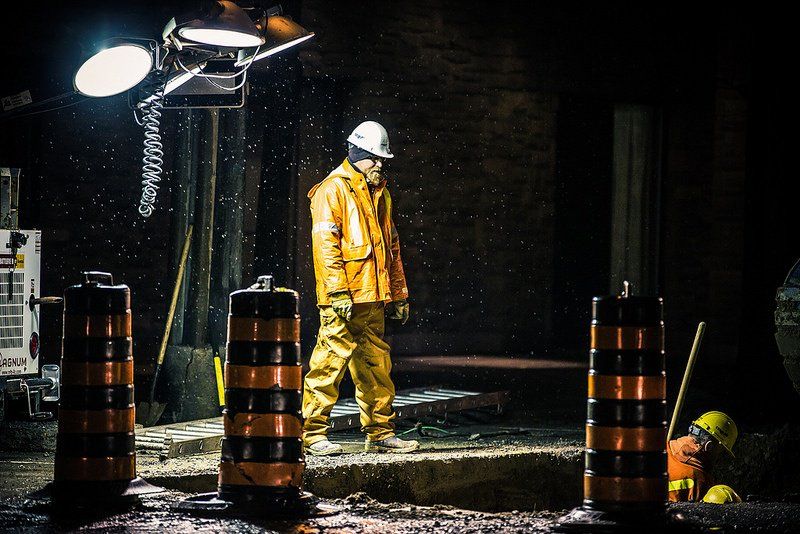
Protecting Yourself from the Elements
In rainy conditions, your workers will want waterproof trousers, waterproof coats and waterproof shoes or safety boots. Waterproof clothing, however, is not always windproof, and after hours of exposure, it is not always waterproof either. When you are wet and cold, you are at a greater risk of making mistakes and poor decisions that could result in a safety issue.
If hi vis is required, opt for a waterproof hi vis over-trouser and jacket set and make sure the clothing meets PPE regulations.
Legal Requirements for Workplace Temperature
The law informs us of the minimum workplace temperature but not the maximum. Temperatures indoors have to be “reasonable.”
The minimum temperature is 16° Celsius. If you are working and moving rigorously, such as outdoor work, the minimum temperature should be at least 13° Celsius. However, the grey area is that employers have the duty to determine what is considered reasonable and comfortable.
A thorough risk assessment should be done in all conditions including rainy conditions and your employer has a duty to protect you from harm.
Prioritise Safety in Adverse Conditions
Make sure you have site supervisors who are trained in recognising conditions caused by the rain and cold, such as frostbite, chilblains, and hypothermia. Report all incidents and treat immediately.
It is also a good idea to limit exposure and rotate workers so that everyting works properly. For example, since waterproofing does not always last all day, give your workers opportunities for breaks, to change clothes, and get dry and warm before sending them back out in those conditions again.
Rotate your workers to avoid these problems too, or on wet and cold days try to find alternative jobs. Always make sure your staff have the right equipment for conditions.
Conclusion
There are no regulations about working in the rain but there still needs to be safety measures in place. Employees must equip their staff with free equipment and provide training on how to use it.
Your staff are just as likely to have an injury in the rain as they are in the snow. It is important to protect your workers with the right workwear, such as waterproof clothing and safety boots.
Make sure you are adhering to the Health & Safety laws and check the temperature your staff are working in. Most importantly, prioritise the safety of your workers.
The British weather is (in)famous for its rain, meaning that those who work outside are at risk of getting wet. Are there any specific ‘working in the rain’ regulations? What are an employers’ responsibilities when employees are working in wet weather? Do you continue to work in the rain? What Should You Know About Working in the Rain? […]
As of January 2017, Build UK, who represents some of the UK's biggest contractors and trade associations, has mandated hard hat colour codes.
Excepting Network Rail workers, whose sites only permit white and blue safety helmets, all other construction sites - new and existing - will be expected to change their helmet colours according to the wearer's site role.
Need Hard Hats with logos? XAMAX® is your perfect safety headwear print supplier.
Why were the colour codes changed for hard hats on sites?
The colour coding system was released April 2016, and is designed to identify workers by their safety qualifications. Each different colour hard hat has a different meaning, and it's important we take note.
The system is intended to reduce on-site dangers by making it easier to note the experience and expertise of each person on a construction site. Those trained in first aid, and fire marshals will wear stickers on their helmets for easy identification.
Do you need a Hard Hat or a Bump Cap? Bump caps are not covered by these changes.
What do the new hard hat colours mean?
The new hard hat colour codes are:
- Black: Supervisors
- Orange: Slinger/Signaller
- White: Site Manager / Competent Operative / Vehicle Marshall (also wears a different coloured Hi Vis vest)
- Blue: Inexperienced Person / Visitor / Apprentice / Architect / Anyone else who doesn’t fall into the above categories.
- Green First Aid + Sticker: First Aider
- Red Fire Marshal + Sticker: Fire Marshal
Images show the Portwest Safety Helmet, available in all mandated colour codes.
To reiterate, these standards and the new colour coding will be industry recognised, so - wherever you are in Britain - you’ll know who does what and who is qualified in various safety measures.
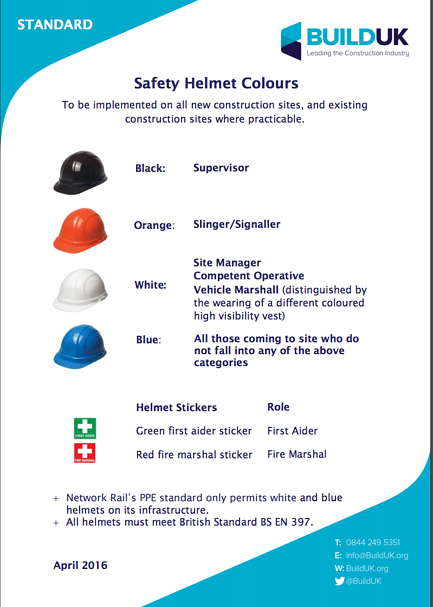
That means no more green and yellow hard hats on the highway.
Black Hard Hat Meaning
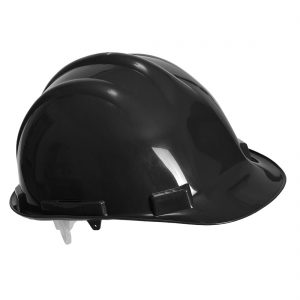
If you see a black hard hat wandering around the construction site, you can be sure that's some sort of supervisor or foreman.
Any problems you need help with, the black tops are the people you go to.
They'll also be the ones calling you out if you're slacking!
Orange Hard Hat Meaning
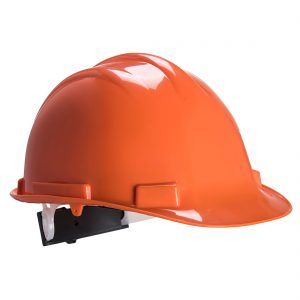
If you're on site and you need a ton of bricks shifting, or a joist lifting into place, you need to look for an orange hard hat. These personnel will be the ones trained, qualified and authorised to sling the weights to be lifted. Slinging isn't an easy job and requires skill and training to ensure weights are evenly distributed to ensure a safe lift.
The crane operators will need hand signals to know when it's safe to lift too. These have to be precise and conspicuous, so this is another trained skill the orange tops have. Orange hats will likely have other skills. They could be a brickie, a joiner, and electrician or pretty much any construction trade. The orange simply signifies that the wearer is also trained to sling and signal.
White Hard Hat Meaning
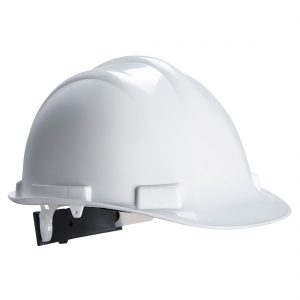
These hard hats have multiple uses. The site manager will be wearing a white hard hat on the construction site to signify that he's in charge.
But then, anyone who is skilled in their trade and classed as a "competent operative" would be wearing a white hard hat too. That clash between those who do the work and those who create the work may cause confusion, but it's likely the site manager will be wearing a suit and not grafter's workwear.
A vehicle marshal will be wearing white too, but there's a very good chance they'll be wearing Class 3 hi-vis (at least should be) which would be marked on the back as a marshal.
Blue Hard Hat Meaning
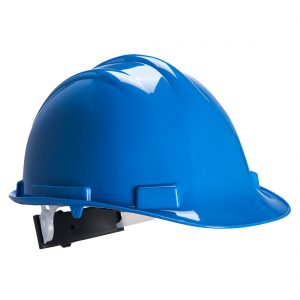
This colour of helmet is reserved for those who shouldn't really be left unsupervised on a building site. Apprentices will be wearing a blue hard hat, as will any visitor to the site.
Health & Safety is everyone's responsibility. If you see a blue hat working alone or wandering around unsupervised, you should look for a black hat and let them know.
Red Hard Hat Meaning
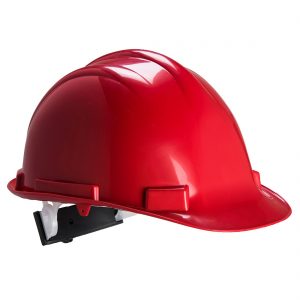
Oh My Lord there's a FIRE!
When the alarm goes and everyone exits in a safe and orderly manner, it will be a red hard hat directing you. You do as they say if you want to stay alive. This is an important position that requires extensive training and responsibility. There will likely be a sticker on their hat that signifies they are a fire marshal, but not every time.
Green Hard Hat Meaning
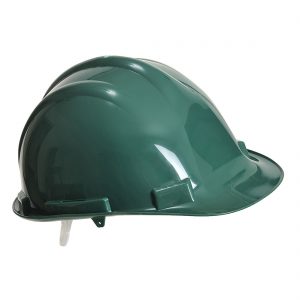
There's not a tradesman in history who hasn't skinned a knuckle, cut their finger or taken a knock to the head. When those incidents happen (and they do happen) and somebody is hurt, it is a first aider you look for. By looking for a green hard hat you will find the first aider more easily and quickly.
As with the red tops, green tops will likely have a first aid sticker on their helmet that comes with the job.
What happens if I don't follow the colour safety rules?
The new regulations WILL cost companies if they don’t comply immediately and HSE may halt projects if site workers aren’t wearing the correct coloured hard hats.
This happened in 2008 in Aberdeen when a £285 million construction project was stopped for incorrect hat colours, breaking Health and Safety regulations.
There is no excuse really. Hard hats are a relatively inexpensive piece of PPE, especially considering the dangers of not using them properly.
How much will all this cost me?
It is better to ensure that you and your colleagues are safe on site, than it is to hope for the best and save a few quid. Fines are being handed out and workers are getting injured.
In the long run, these regulations mean lower costs to employers, which is good news for companies. With fewer hard hat colours, companies will have to buy fewer variants, but initial replacement may be costly, if you haven't done it already.
Although by now, you probably should have got al this sorted. Hard hats only have a certain shelf life anyway, as the plastic weakens and deteriorates over time, depending on the weather conditions of your particular site.
There should either be an embossed or printed ‘best before’ date on your helmet, or some brands have stickers that fade over time, letting you know when it’s time to replace it.
There is no excuse for providing or wearing an unsafe hard hat, so make sure everyone is covered correctly at all times.
Can I still add my logo to a hard hat?
All helmets must meet British Standard BS EN 397, so full wrap stickering won't be allowed. You can still safely have your logo printed onto a hard hat so long as your supplier adheres to safety standards.
Just one more reason to always choose a BSiF Registered Safety supplier like XAMAX® as your trusted customisation specialist.
Where can I get hard hats with my logo printed on?
XAMAX® can supply you with high quality, fully compliant and customised hard hats at highly competitive prices. If your company needs new hard hats, check out our selection here;
All safety helmets and hard hats are available in the four regulation colours, meet all PPE standards and are available to add your logo to.
XAMAX® use direct pad printing techniques as well as indirect printing on our hard hats to ensure you get the quality you deserve.
What was the old hard hat colour coding system?
For those who are curious, the old regulations necessitated a staggering seven colours of hard hat: white, green, yellow, brown, blue, orange, and grey.
- White was for managers, foreman, engineers, or supervisors
- Green was for safety inspectors, new workers, or probationary staff;
- Yellow was for general labour and earth moving operators; brown was for welders and other high-heat workers
- Blue was for carpenters and technical operators, including electricians
- Orange was worn by road crews
- Grey was worn by site visitors, or those who forgot or misplaced their hard hat. Sometimes a bright pink hard hat was worn as a semi-punishment.
Forget those seven colours. Now, there are only a simplified four colours to remember, which should make it easier and safer for everyone.
What will companies do with all of the old hard hats? And - most pressingly - can Bob the Builder be fined for wearing his yellow hat on a construction site instead of a white one?
Yes he can.
Of course, it's important to remember that these colour codes for hard hats only refer to construction sites in the UK. Any other working environment can pretty much use any colour they like.
As of January 2017, Build UK, who represents some of the UK’s biggest contractors and trade associations, has mandated hard hat colour codes. Excepting Network Rail workers, whose sites only permit white and blue safety helmets, all other construction sites – new and existing – will be expected to change their helmet colours according to […]
Here is everything you need to know about dust mask ratings - the same safety standards are used for respirator ratings and the specifications of face masks. After reading, you should know the different dust mask protection levels and the rating system used in respiratory PPE before you choose a dust mask for work.
You should also have a good idea of which dust mask or face mask rating you will require for the job you are doing and the dust protection you need.
- Page Contents
- What Is A Dust Mask For?
- The Safety Acronyms Used
- Why You Should Wear A Dust Mask
- When it comes to your health & safety, it is better to be safe than sorry.
- A quick guide to these three types of dust mask: ffp1, ffp2, ffp3 - the differences
- How to choose between mask ratings
- Maintenance of your respiratory protection
- Our pick of the best dust masks for work
- XAMAX®: Your Trusted Source for Dust Mask and Respiratory Protection
- Conclusion
What Is A Dust Mask For?
Silly question, but we need to start somewhere...
Disposable or half-face dust masks offer respiratory protection against particulate hazards and airborne particles like dusts (anything from wood dust to brick dust to household dusts), powders and aerosols (aka: Aqueous Fog). That is, they filter out bad stuff from the air you breath so you don't inhale poisons or hazardous dust particulates.
Dust masks are vital for a range of industries: construction, agricultural, pharmaceutical, and even for your DIY projects at home. The FFP1, FFP2, FFP3 ratings offer different levels of protection so it is vital you find the correct level of protection you need from a respirator.
The Safety Acronyms Used
Respiratory protection in the form of disposable dust masks come in three respirator ratings: FFP1, FFP2, and FFP3 - FFP stands for "Filtering Face Piece" and the number denotes the level of protection. Many people shorten these acronyms even more as P1, P2 & P3 - but the meaning and level of respiratory protection is the same.
Some people refer to these ratings as respirator codes, respirator filter codes, or respirator grades but we are essentially discussing the very same things.
Each of these types of mask will specify their suitability for the "Occupational Exposure Limit" (OEL) and their "Assumed Protection Factor" (APF).
We use these acronyms throughout this article, and they are in common use within the H&S industry, so you would do well to try and remember them.
When choosing a face mask you need to determine which dust mask ratings you need for your workplace hazards (although your employer should identify the hazards for you and provide the correct PPE) or your home DIY hazard.
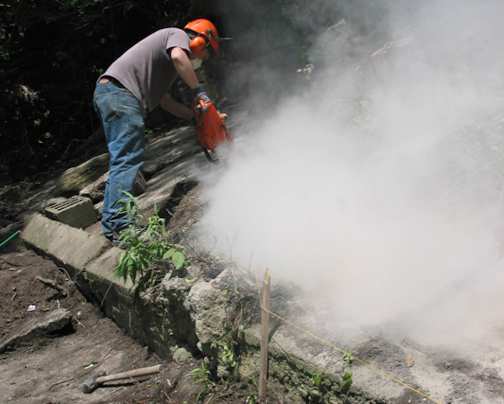
Why You Should Wear A Dust Mask
Workers often choose not to wear a dust mask because it feels uncomfortable, men may need to shave everyday (so the mask fits correctly on the face), it may interfere with other PPE (such as their goggles or face screen), other people on site do not wear them and they want to fit in, and many other factors.
However, the risks of not wearing the correct respirator mask with the correct ratings are many and you could develop harmful and life threatening lung conditions.
Remember: The wrong protective face mask is no protection at all
A dust mask can protect you from developing painful coughs, wheezing, shortness of breath, chest tightness, and difficulty breathing - as well as more serious long-term or terminal conditions like lung cancer, chronic obstructive pulmonary disease (COPD) and even mesothelioma.
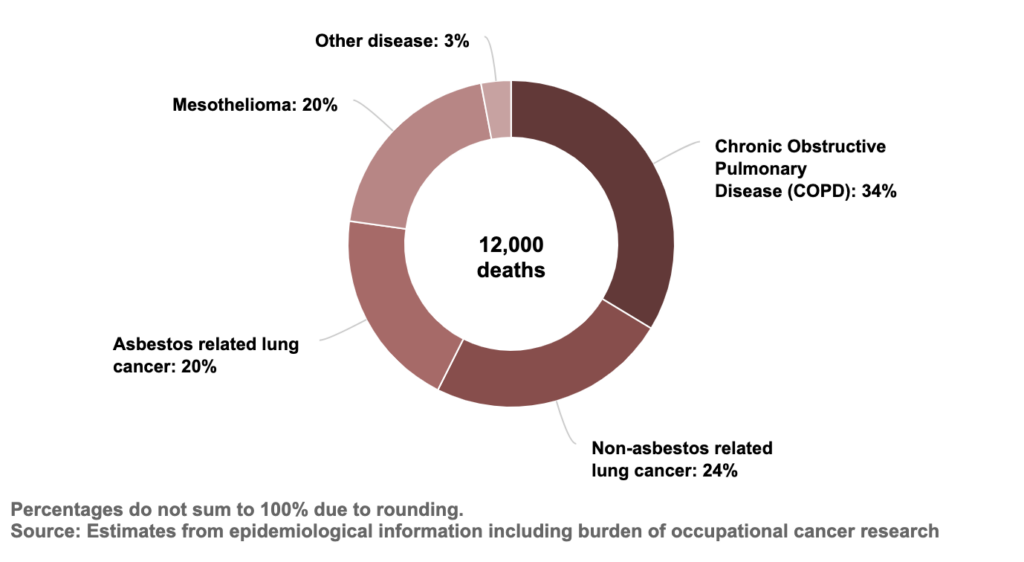
When it comes to your health & safety, it is better to be safe than sorry.
The mask should be tight fitting, and a fit test should always be performed when fitting a new face mask.
The statistics for respiratory diseases from the 2022/23 HSE report make for sobering reading. There are 12,000 deaths associated with respiratory hazards after long-term exposure and 18,000 estimated new cases of self-reported work-related breathing or lung problems ANNUALLY.
Please do not become a statistic - Choose the right dust mask for the hazards around you.
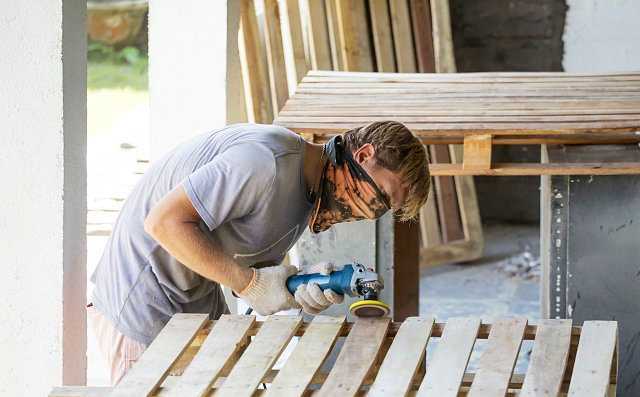
A quick guide to these three types of dust mask: ffp1, ffp2, ffp3 - the differences
FFP1 Dust Masks
What does a P1 filter protect against?
- Protects against low levels of dust.
- Protects against solid and liquid aerosols.
- Can be used for hand sanding, drilling, and cutting.
- OEL: Protects against materials in concentrations 4x limit.
- APF: Protects against materials in concentrations 4x limit.
FFP2 Dust Masks
What does a P2 filter protect against?
- Protects against moderate levels of dust.
- Protects against solid and liquid aerosols.
- Higher protection than FFP1
- Can be used for plastering and sanding.
- OEL: Protects against materials in concentrations 12x limit.
- APF: Protects against materials in concentrations 10x limit.
FFP3 Dust Masks
What does a P3 filter protect against?
- Protects against higher levels of dust.
- Protects against solid and liquid aerosols.
- Higher protection than FFP1, and FFP2.
- Can be used for handling hazardous powders such as those in the pharmaceutical industry.
- Recommended when in doubt of protection needed.
- OEL: Protects against materials in concentrations 50x limit.
- APF: Protects against materials in concentrations 20x limit.
- Can be used as an Asbestos mask
- Current NHS guidelines stipulate FFP3 face masks for virus and bacterial infection control when the contagion is spread through aerosol (coughs, sneezes etc)
A P3 filter or mask would be the minimum required face mask for chemical fumes, but we would recommend a Half Face Respirator with a P3 Cartridge Filter rather than a disposable dust mask. The same goes for a Dust mask for Asbestos protection - although a disposable P3 dust mask is sufficient, we recommend a half mask with a P3 cartridge or contact us for a full face mask solution.
How to choose between mask ratings
- Identify type and level of contaminant exposure.
- Evaluate airborne hazards in workplace (or workshop).
- Choose mask based on FFP rating.
- Choose a comfortable and convenient mask.
Maintenance of your respiratory protection
- Regardless of the size of your business or company, always perform a PPE respiratory protection audit to make sure everything is as it should be.
- Ensure your respirators are the correct type and safety rating for the intended use.
- Check regularly for damage - do not attempt to repair, replace any damaged masks.
- Discard or clean if breathing becomes affected by blockages or overuse
- Always replace when needed.
- Clean non-disposable equipment daily or as needed in between.
- Keep an inventory of stock, and reorder when low.
- Make sure your PPE meets regulation standards and protects your workers.
Our pick of the best dust masks for work
There are many different types of dust mask, both disposable and reusable, here are some examples of dust masks along with their ratings to give you some idea of what is available to buy.
XAMAX®: Your Trusted Source for Dust Mask and Respiratory Protection
When it comes to choosing dust masks and respiratory protection, it's crucial to source your PPE from a trusted supplier. XAMAX® is a BSIF registered safety supplier, meaning we provide only compliant, high-quality protective equipment. Whether you're working in construction, manufacturing, or other sectors where dust and particulates are a hazard, we offer a range of FFP1, FFP2, and FFP3 dust masks to suit your specific needs.
XAMAX® understand that no two workplaces are the same, which is why we carefully select products that meet the highest standards while also catering to comfort, fit, and durability. Our team ensures that each item meets the latest EN 149 standards for respiratory protection, giving you peace of mind that your team is well-protected.
If you're unsure which level of protection is best for your work environment, our knowledgeable team can guide you to the most suitable product—whether it's for occasional DIY use or for hazardous, high-exposure industries. XAMAX® also offers reliable stock levels and fast, efficient delivery, ensuring you're never without the essential protection your team requires.
You can trust us to keep your workforce safe while maintaining cost-effectiveness and compliance.
Conclusion
Understanding the differences between FFP1, FFP2, and FFP3 dust masks is essential for ensuring proper protection in the workplace. Each rating corresponds to a different level of defence against dust, aerosols, and other hazardous particles, with FFP3 offering the highest protection.
Selecting the right mask based on the hazards present is critical for safeguarding your lungs and preventing long-term health issues such as COPD or mesothelioma.
Not only is it important to choose the correct mask, but regular fit testing and proper maintenance are key to ensuring the effectiveness of the respiratory protection you provide.
Always make sure your team is using dust masks that comply with UK safety regulations and are rated for the specific work they perform.
By making informed decisions about respiratory PPE, you can significantly reduce the risks associated with airborne hazards and ensure a safer, healthier working environment.
Choose XAMAX® for trusted, high-quality respiratory protection that ensures both compliance and safety across a range of industries.
Here is everything you need to know about dust mask ratings – the same safety standards are used for respirator ratings and the specifications of face masks. After reading, you should know the different dust mask protection levels and the rating system used in respiratory PPE before you choose a dust mask for work. You […]
Personal Protective Equipment is designed to be a last resort when all other safety measures have been put in place. All PPE provides some level of protection, and some is required by law whilst others just provide additional protection. So what PPE do you need to work on a construction site safely?
- Page Contents
- Types of PPE needed in Construction
- Other Considerations
There are many questions to consider before beginning work on a building site. For example, do you need to wear a hard hat or a bump cap or can you choose to wear none at all? Do you have to wear specific safety boots, or can you wear what you choose... Riggers perhaps? What about eye protection, hand protection, hearing protection or body protection? Do you need to wear Hi-Visibility clothing or is that a personal choice?
The Types Of PPE Needed On A Building Site
The Health and Safety Executive only outlines four mandatory, legally-required protections for a construction site. Provisions must be made for:
- Head protection
- Foot protection
- Hi-Visibility Clothing
- Body protection
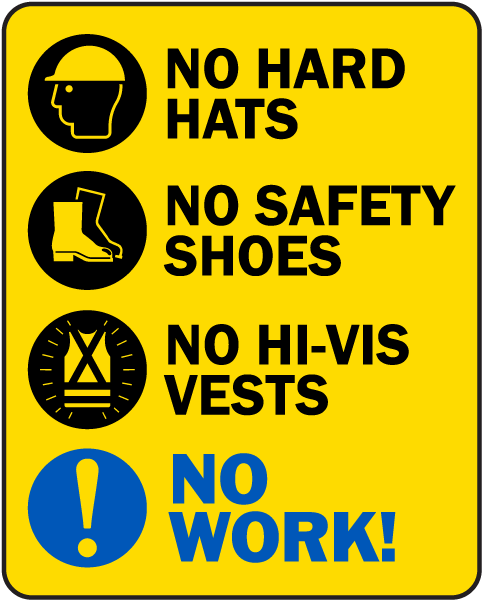
However, it is always best to provide more protection than is needed, so if your site poses a high-risk of cuts to the hands or arms, make sure you provide cut-resistant safety gloves.
If there will be flying debris, or your workers labour outside in sunny conditions, be sure to provide eye protection with built in sun-protection too. The same goes for the fabric of the clothing - some clothing provides UV protection whilst others does not.
If you want to keep your workers safe on the basic, legal level, here is what you need to know. It is recommended you do more than just the basics though. Workplace accidents can cost you time & money and worker's their ability to work, their mobility, or even their lives.
Head Protection
Head protection is required by law on all construction sites where there is a risk of head injury. All construction work should be assessed to minimise the risks. For example using toe boards on scaffolding or brick guards when necessary to prevent objects from falling to the ground.
If you have put all the safeguards in place to minimise risk, but there is still a risk of injury, you should make sure all workers are provided with head protection that complies with PPE Regulation 1992 the updated PPE Regulations which mandates head protection in construction.
Head protection should be in good condition, undamaged, fit the person wearing it properly and be supplied by a reputable supplier (there are fake hard hats out there so use a BSiF Registered Safety Supplier such as Xamax).
To ensure your workers wear head protection, make it a site rule, always wear your hard hat on site, and check people wear theirs.
The only exception to the hard hat rule is for Sikhs who wear turbans. They do not have a legal requirement to wear a hard hat on a construction site, but you may want to impress upon any visitors or workers the dangers of not wearing a hard hat.
Safety Boots
Protective safety footwear is required on construction sites to protect the delicate foot bones and tendons during heavy work. Steel toecaps protect against dropped objects; mid-sole protection protects against punctures or penetration such as treading on a nail.
Workers do not need to pay for their own safety footwear; basic safety footwear should be provided by the employer as long as you make it last a reasonable time (boots should be replaced every 6-12 months usually except in exceptional weather conditions). Any PPE needs to have a ‘CE’ mark to comply with PPE 2002/2016 regulations.
Some ask if rigger boots can be worn on a construction site - the appeal is that they are like lace-up boots and wellies in one. But some construction companies have found wearers are likely to suffer from a twisted or sprained ankle because rigger boots offer no support to the rolling action of an ankle.
Some contractors do not allow them on site at all, but it is up to your specific site; however, it is best to wear a safety boot that is fit for purpose. It is recommended to find a safe, comfortable boot that is made for the building site and fulfils all the safety ratings you may need on a construction job.
If your site has asbestos, lace up boots are prohibited. A Chukka style or a rigger boot may be appropriate here.
For workers pouring cement, wellington boots provide the most protection against cement burns as cement can get into safety shoes or boots. A pair of safety wellingtons would be appropriate, so long as you match the safety ratings against the footwear.
Hi Vis Clothing
Hi Vis vests are required when your construction site has a Hi Vis policy, which it almost certainly has.
Safety rules on site will likely have been set by the construction firm, but workers tend to be contractors, sub-contractors or even self-employed. So it would not be the construction firm's responsibility to provide Hi-Vis. The responsibility would fall on whoever pays your wages, if you are self-employed, that is you.
A Hi Vis vest might not be the only form of Hi-Visibility clothing you can wear to comply - modern fabric technology has created Hi Vis EVERYTHING. High Visibility Hoodies are becoming very popular amongst grafters, but check with your site manager that they allow them.
If your site is located near vehicles or has vehicles moving around site then you must wear Hi-Vis, even drivers need to wear it when leaving their vehicle. A hi-vis polo or fleece would work well
Often a simple Hi Vis vest is sufficient to provide safety. However, for temporary traffic management, full Hi Vis (trousers and long-sleeved jacket/polo) is recommended. This will provide higher visibility to drivers from a greater distance.
Body Protection
All clothing on a construction site must protect the wearer from on-site hazards. Some ask if those on a construction site can wear workwear shorts - the answer depends on the owners or managers of each building site - however, a good pair of work trousers protect the lower leg from cuts, grazes, splinters, skin damage, and infection.
Kneepads are also an absolute godsend if you are on your knees, so it is best to find a pair of action, holster, or cargo trousers with slots for some kneepads.
For summer weather, it is important to protect from the sun because overexposure can cause sunburn and increase the risk of skin cancer.
In cold weather, long trousers can keep the wearer warm and help protect against cold stress injuries.
Other PPE Considerations
The four types of PPE are generally what a worker needs to be wearing in order to be allowed onto site in the first place, but there are other things you must consider.
Other forms of PPE may be required for each specific task you are doing. For instance:
- If you are using a Stihl Saw, you would need safety goggles (or preferably a full face mask), ear defenders, a decent pair of gloves and some form of respiratory protection like a FFP3 rated dust mask.
- If you are using a pneumatic drill to break up old concrete, you would need ear defenders, safety goggles and a decent pair of anti-vibration gloves.
- Labourers carry sharp or rough objects around site, so would need at the minimum a good pair of rigger gloves.
- Brickies are handling bricks and mortar all day long, so a good pair of close fitting abrasion resistant grip gloves would not go amiss.
- Fabricators and Welders would need their usual safety goggles for grinding, welding masks, gloves, and ear defenders
- etc etc
And don't forget that it is not only YOUR job you need to consider. Ear defenders should be worn if you are working near the bloke on the pneumatic drill or Stihl Saw. Eye protection and Ear protection if you are working near the fabricator/welder.
There are hazards everywhere on a construction site, decrease your own risk factor by wearing all the PPE required.
Personal Protective Equipment is designed to be a last resort when all other safety measures have been put in place. All PPE provides some level of protection, and some is required by law whilst others just provide additional protection. So what PPE do you need to work on a construction site safely? There are many […]
In this article you will learn: Different types of ppe signage and symbols; Why safety symbols were developed; What safety symbols are; PPE symbols and their meanings; The different colours of safety symbols; How to know what PPE to wear in specific workplaces.
- Page Contents
- Why Were PPE Symbols Developed
- Safety symbol colours and their meanings
- Personal Protective Equipment Workplace Signage
Symbols are quite literally everywhere. It’s universally recognised that man and woman graphical symbols mean male and female toilets. Similarly, a disabled sign near a parking space means parking for disabled persons. The red octagon of the stop sign can be recognised from afar. But Health & Safety signs and PPE symbols (or pictograms) are another matter.
And if you need to know about the PPE requirements on site, you'll need to understand the various Health & Safety symbols used in safety signs.
Some of the common, universally recognised symbols are shown below. Have a look around and you’ll see numerous examples - you have definitely seen most of these, if not all of them.
So if everyday symbols are recognisable, what about symbols designed to keep you safe at work? Here’s a quick list of PPE Symbols, signs and pictograms to help you learn what means what - to keep you safe and protected at work or wherever you are.
Why PPE symbols were developed
Before we dive in, let’s explore why the symbols were developed in the first place. Specifications were put in place for PPE symbols to provide some level of standardisation. These are recognised across Europe to keep workers safe.
The International Organization for Standardization (ISO) was founded in 1947 and is a standard-defining body composed of representatives from organisations around the world. ISO headquarters is in Geneva, Switzerland, and works in 162 countries as of March 2017. It is backed by the United Nations and Economic and Social Council.
ISO 3864-2 standards are ISO mandatory symbol labels to inform people of the policies that must be followed. You’ll find these symbols on product identifier labels and data sheets listing the Hazards and the PPE you must wear in order to protect yourself.
Safety symbol colours and their meanings
In any work environment or public space you’ll see a series of colour symbols to depict dangers, warnings, and let you know where to go: red, yellow, blue, and green labels.
The imagery, or pictogram, may vary along with the text, but each sign will communicate the same concept. You may see symbols with a light or darker background, but all graphical symbols will be either white and edged in white, or black and edged in black. The majority of the symbols are common sense and easily indicate the safety measure necessary.
Of course: if in doubt, ask someone.
Red Symbols
Red labels warn of dangers. They are a round shape edged in red with a black pictogram. These labels indicate the behaviour should stop or not start. For example:
Yellow or Amber Symbols
Yellow or Amber labels indicate a warning. They are triangular in shape with a yellow background and black edging. These labels indicate where you’ll need to take precautions. For example:
Green Symbols
Green rectangular or square shapes with a white pictogram and green background indicate emergency escapes, first aid and no danger; these are exit doors and escape routes. For example:
Blue labels
Blue labels - which is the focus of this post from here on in - indicate mandatory actions. You have to complete a specific behaviour or perform a specific action such as washing your hands or wearing personal protective equipment.
They are always round, blue background with a white pictogram and border. For example:
Personal Protective Equipment Workplace Signage
So how do you know what PPE you need to wear in specific workplace environments?
You will see various mandatory PPE signs at entrances, near machinery, at workstations etc. - assuming your workplace is fully compliant with all risk assessments completed, of course. They will be the Blue symbol type which denotes mandatory actions. Take heed, your health and safety is at stake.
Eye protection signs & symbols
Some of the different types of eye protection PPE signs and symbols you'll see around various workplaces are below. Notice 2 main types of eye protection: goggles/glasses and face shields. Sometimes face shields are required as glasses aren't enough protection. This will be shown with a different PPE symbol on the signage. It's also possible googles are provided for specific equipment only so shouldn't be removed from the area. As with all health & safety signage, all actions, orders, warnings etc should be adhered to.
Hearing protection signs & symbols
Examples of hearing protection signs and symbols are below. Notice the consistency in the hearing PPE symbol? It will always look like this but can be accompanied with differing text. The "Danger Noise Hazard" sign is different and is a warning, but would most likely be partnered with the mandatory ear protectors symbol.
You might not realise you're in a high noise environment while no work is being done, but if you're not protecting your hearing as the noise starts, you could do permanent damage. Seeing the ear protectors signage indicates that you should be wearing ear defenders or ear plugs all the time in the area the signage covers.
Hand protection signs & symbols
Examples of hand safety signs and symbols you would find in the workplace are below. Notice the different shapes and text of the signs, but the consistency in the protective gloves symbol. These signs could be used to cover an entire work site, a specific area or just one machine.
Different types of protective gloves would be needed depending on the specific hazards of the workplace. Anything from simple Rigger Gloves to Anti-vibration Gloves or Cut Protection Gloves (and the myriad ratings) could be needed, so it is important to ask the supervisor what gloves are being referred to when you see these signs.
Foot protection signs & symbols
Examples of foot protection signs and symbols you would find in the workplace are below. Notice the different shapes and text of the signs, but the consistency in the protective footwear symbol EXCEPT if specific types of safety footwear is required. In the case below, you'll see the symbol for Anti-static safety footwear alongside the mandatory order text.
Respiratory safety signs & symbols
Examples of respiratory protection signs and symbols you would find in the workplace are below. Over the last few years respiratory protection has become a social issue (no need to explain why here, you know what we mean), so we have included the face coverings signs you will have seen. Although these are still important, it is the "Wear Respirator" signs and symbols you are more likely to see in industry. This usually denotes that specific ratings of mask protection are required - Your common or garden face nappy simply won't do.
Head protection signs & symbols
Examples of mandatory hard hat symbols and signs are below. If you see this, there is likely to be danger from falling objects and a hard hat could save you life so must be worn. There is a good chance you would need to wear a hard hat of a certain colour too - bump caps would not be suitable. Text may vary, but the symbol will always be blue background with a white pictogram.
Protective clothing signs & symbols
Below you can see examples of protective clothing signs and symbols you might find in the workplace. There are many different types of protective clothing for many different hazards, hence the need for different types of symbols and signage.
The term "Protective Clothing" on signage generally relates to coveralls of one type or another as you can see by the symbols used. This could be anything from a simple coverall to protect the wearers clothes right up to a high spec flame retardant, anti-static, arc-flash resistant hi vis coverall. However, high visibility clothing is also considered protective clothing. Depending on the types of risks of the work environment, you may see any of these signs or symbols.
Machine safety signs & symbols
Not exactly PPE, but machinery guards are a necessary part of Health & Safety, so are included in this guide for your information.
Examples of machine safety signs and symbols you may find in the workplace are below. These generally relate to machinery guarding so would often appear alongside other mandatory PPE signage such as eye protection, ear protection, gloves etc.
In this article you will learn: Different types of ppe signage and symbols; Why safety symbols were developed; What safety symbols are; PPE symbols and their meanings; The different colours of safety symbols; How to know what PPE to wear in specific workplaces. Symbols are quite literally everywhere. It’s universally recognised that man and woman […]
We should never ignore the importance of PPE in the workplace. To understand how important it is, we need to understand what it is. The definition of personal protective equipment (AKA: PPE) is any items of safety equipment that protects the wearer against potential occupational health and safety risks.
It is legally required for most industries such as construction, agriculture, and engineering. Protective equipment required by law will differ according to the wearer’s working conditions.
Read on to find the importance of personal protective clothing.
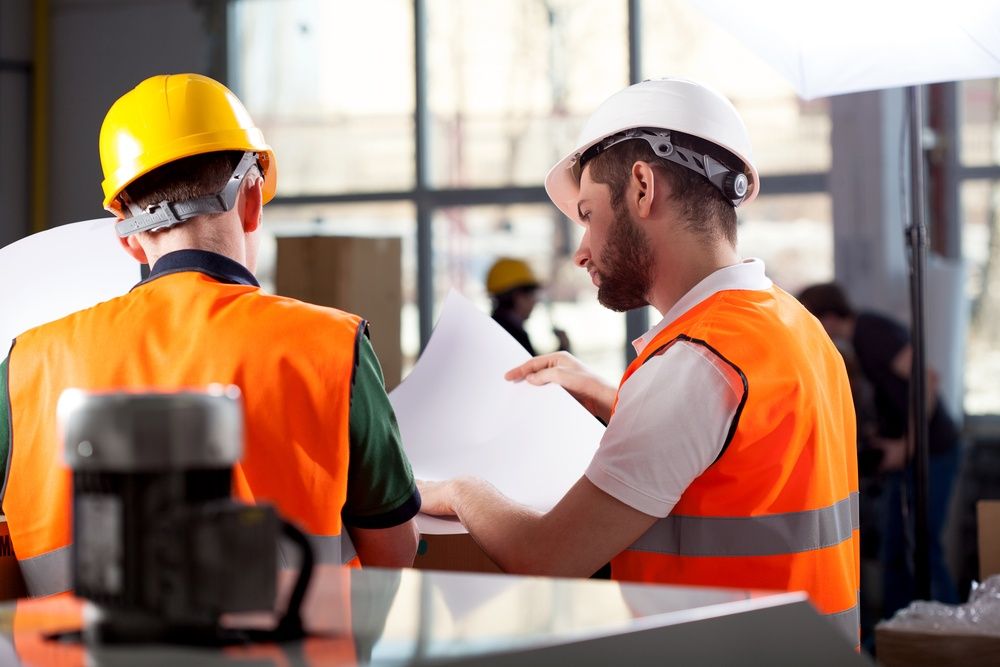
Why is it Important to Wear PPE in the Workplace?
According to the Health and Safety Executive (HSE), it is important that we make the workplace as safe as possible. There should be instructions and procedures in place, and employees should have adequate training and supervision. But even after these safety systems have been applied, some hazards might remain.
The Risks of Not Using Workplace Safety Equipment:
Injury to the...
- Lungs - from breathing contaminated air.
- Head and feet - from falling items.
- Eyes - from debris and waste in the air or emitted from powertools etc.
- Skin - from contact with corrosive substances.
- Body - from extreme heat or cold.
PPE is the last level of protection in the workplace. The protective equipment forms a final barrier between your employees and the occupational hazards they face daily. It is important you choose the safety and protective wear carefully to safeguard your employees against specific dangers. In addition, train your workers to use their personal protection equipment correctly and teach them how to identify and report any faults.
What are the Different Types of PPE and their Uses?
Eye and Face Protection
Manchester Royal Eye Hospital worked with Manchester University to create a general information leaflet on eye safety (revised in September 2019). Their findings were:
- 90% of all eye injuries could have been prevented.
- 3/5 workers were not wearing their PPE
- 40% of all workers were found to be wearing the wrong type of eye protection
Protective eye equipment shields not only the wearer’s eyes, it can also protect their face too. An example of eye and face protection in construction is a face shield which protects you against a variety of hazards. Such as: chemical splashes, dust, gas and even radiation.
Different types of eye protection safeguard against different hazards. It is important your choice is suitable for the job role.
Safety Gloves
According to the HSE, there has been an increase in incidences of contact dermatitis in construction workers. In addition, carpal tunnel syndrome can also affect construction workers.
Personal protective equipment gloves will safeguard your employees’ hands and arms from: abrasions, extreme temperatures, cuts, punctures, electric shocks, chemicals, vibrations and more.
Different gloves offer varying levels of personal protection. You need to consider the hazards in your workplace to make a suitable choice.
Here's our guide on hand safety and all our guides on safety gloves
Head Protection
According to a 2016 Labour Force Survey (LFS), of the 5,055 non-fatal injuries reported between 2016 and 2017 for the construction industry, 13 percent were due to being struck by falling objects.
HSE have reported 71,062 non-fatal injuries were reported in 2017/2018 and 10% of these injuries were because of being struck by a moving object.
Hard hats (or Safety Helmets) protect the wearer from the impact of falling or flying objects and from hair getting caught in machinery. They are also colour coded for different job roles.
Bump caps protect the wearer from "bumps", so are perfect for working under vehicles. Hard Hats and Bump Caps are not the same and have different uses.
High Visibility Clothing
Hi-vis clothing such as vests, jackets and trousers are essential equipment to keep your workers safe and seen on site. This type of safety protective clothing ensures that your employees can be easily seen in a variety of light conditions, from low light to broad daylight.
A Hi Vis vest is one of the most popular types of high-visibility clothing and there are different things to consider when you are picking them for your construction team. For starters, there are different levels of protection, based on the type of clothing and level of visibility they offer.
High Visibility Classifications:
Class 1 - the lowest level of protection. It should only be worn in minimal risk zones. For example, only wearing Hi Vis trousers.
Class 2 - the intermediate level of protection. More visible in the dark with headlights shining. For example, wearing a Hi Vis vest.
Class 3 - the highest level of protection. For example, wearing a Hi Vis coverall/overall or high visibility vest and trousers.
A Hi Vis vest is a popular choice of high-visibility clothing. It is important you consider the different levels of protection the law requires for your workplace.
You should ensure you know all about the high visibility standards before you buy, as the incorrect hi vis is effectively no hi vis at all.
Respiratory Protection
Respiratory personal protective equipment is a special form of PPE that offers protection for the respiration system.
A 2016 survey conducted by LFS found that of the 80,000 participants, 3,000 construction workers suffered from breathing and lung problems that were caused or made worse by their work. Therefore respiratory protective equipment (RPE) is essential.
HSE have reported an estimated 12,000 people die each year due to occupational lung disease and there are 20,000 new cases that are self-reported.
As with most PPE, the wrong kind of respiratory protection is no protection at all. Learn al you need to know in our guide to FFP1, FFP2 and FP3 here.
Safety Footwear
Of the 5,055 non-fatal injuries reported in the 2016-17 period, construction employees were most likely to suffer from slips, trips and falls. The slip and trip hazard is one of the most prevalent in every industry but is particularly so in construction as there can be a variety of debris littering the floor.
But it is not just slip hazards that can harm your workers. Heavy and sharp items can easily crush or pierce the feet and legs too. It is important that your employees are wearing the appropriate safety foot protection to ensure that their feet and legs are as protected from hazards as the rest of their body.
XAMAX® have some useful guides to safety footwear that includes all the standards, what to look for before you buy and help in choosing the right foot protection for your job roles.
Make Sure Your Workers are Protected
PPE is essential to protect your staff from occupational hazards in the workplace. However, we should only use it as a last resort. Supplying protective equipment is one step towards safeguarding your employees, but it is no substitute for a safe working environment. The first step to safety is to conduct a full risk assessment to identify any dangerous practices. From there, you can make changes for a safer environment so the PPE remains the last line of defence, not the first.
We should never ignore the importance of PPE in the workplace. To understand how important it is, we need to understand what it is. The definition of personal protective equipment (AKA: PPE) is any items of safety equipment that protects the wearer against potential occupational health and safety risks. It is legally required for most […]
The Personal Protective Equipment Directive was updated in 2016 and came into effect in 2018. These changes to the PPE legislation define what PPE is and what it covers.
Not only was it updated, but the PPE categories were changed along with the PPE Directive. There is now a maximum five year certificate validity according to the BSI PPE Whitepaper.
Are you and your workers prepared?
- Page Contents
- The PPE Legislation You Need to Know
- Do You Know the 7 PPE Categories?
- Workplace Safety Statistics - What You Need to Take Note
- Enforcement Starts with You
- What is the Cost?
The PPE Legislation You Need to Know
Before the April 2018 deadline, all businesses needed to know the changes in order to update their H&S policies.
You should have re-assessed any workplace hazards since the change in PPE regulations to prevent accidents in the workplace. If not, your company could be prosecuted for non-compliance.
It's a long time ago, but some companies may still be practicing what they were preached 25 years ago.

Do You Know the 7 PPE Categories?
- The PPE categories are
- Hearing Protection
- Head Protection
- Eye & Face Protection
- Foot Protection
- Hand & Arm Protection
- Body Protection (including Knee & Leg)
- Respiratory Protection
You should assess what your workers need for their maximum safety within each of the 7 categories. They may not need equipment from these categories but it is likely their job falls under at least one.
Workplace Safety Statistics - What You Need to Take Note Of
The UK is the safest place to work in Europe because of the Health and Safety Executive and the modern evolution in PPE technology.
- 99% of noise-induced hearing loss is preventable with the correct hearing protection
- 84% of workers who sustained a head injury were not wearing head protection
- Wearing gloves reduces hand injuries by 60%.
Minor incidents that happen in the workplace cost time, productivity and money. It is important you avoid these incidents.
As a business owner, you have a legal obligation to keep the workplace and your employees safe. You can do this by complying with the PPE Regulations and selecting the right PPE for your specific sector needs.

Enforcement Starts with You
98% of employees claim they have seen their colleagues not wearing the correct PPE in the workplace.
The reasons are:
- Poor fit
- Lack of accessibility
- Discomfort
- Unfashionable
You are required to enforce the correct usage of personal protective equipment in at work. Motivate your workforce to consider their long term health and their work friends.
A safety brief on workplace accidents will help your employees realise how important their personal health is.
Improvements to PPE are being made all of the time to make it more comfortable and safer for the wearer. If you receive complaints, you many need to update your worker’s safety kits to get them to comply.
What is the Cost?
You need to provide and replace PPE free of charge. You are also required to provide insurance against worker injury, illness or death because it is likely you will need to pay compensation.
Specialist PPE equipment can be expensive but it is saves money, time lost and losing your business should there be an incident.
You can save money by buying the correct protective equipment and in bulk. The price of safety is low compared to the potentials costs to your business.
The Personal Protective Equipment Directive was updated in 2016 and came into effect in 2018. These changes to the PPE legislation define what PPE is and what it covers. Not only was it updated, but the PPE categories were changed along with the PPE Directive. There is now a maximum five year certificate validity according […]
Do you know the regulations concerning the hoardings around areas of construction work?
The hoarding on building sites - temporary wall-like structures that are built around the perimeter of the site - are covered by site hoarding regulations.
They are designed to shield the site from the view of the public and prevents unauthorised access, theft, destruction and/or vandalism. However, the main point of those fence panels is to protect the public.
The Health and Safety at Work Act (1974) notes that employers have to protect members of the public passing by the construction site. As you conduct a H&S assessment of the site, part of that assessment should determine the risks to the public.
The Construction Design and Management Regulations (CDM Regulations) have 5 principle parts to its legal obligations, requiring signs on the hoarding to establish who has access to the site.
Principal contractors must take steps to prevent unauthorised access. Some sites use keycards and/or have security access to help with site authorisation.
Special Considerations for Site Hoarding
It is important that managers make special considerations. This could be because of rights of way, work areas that are next to the site, houses nearby and children and/or vulnerable people who live in the surrounding areas.
There are extra steps you need to take because of the children and/or vulnerable people who are close to the work site such as:
- Placing barriers around excavations or pits and making sure to immobilise and isolate vehicles.
- Locking vehicles in a compound if it is possible to do so.
- Storing building materials so they cannot fall or roll over anything such as manhole rings, cement bags, and pipes.
- Always removing access ladders from excavations and scaffolding.
- Locking away any hazardous substances.
Wall Height and Construction Materials
Most building sites need at least a 2 metre (6.5 feet) high fence or hoard with 2.4 metres (7.8 feet) being the recommendation. High-security fences or hoarding is 3 metres (9.8 feet). For sites in city centres, or places where children may attempt to gain access, a higher fence may be appropriate.
It is possible for your site operators to build internal perimeter fences out of metal mesh with lockable sections to separate tools inside of the work site. The perimeter hoarding can be made of steel or timber. Timber usually comes pre-set at around 2.4 metres. Often, the it is plywood or low density chipboard.

If you use barbed wire, dragon tail, or electric fencing it would need be higher to avoid accidental injury of passersby.
Modern Designs in Hoarding
Construction companies often paint the hoarding in their contractor’s colours and decorate it with logos and branding to show who is working on the site.
In modern times, some companies have sold space on their site perimeter fencing to advertisers, or used it to display architectural images of the project.
Design and Digital Print company PressOn look to be leading the way in eye-catching aesthetics - here are just a few examples of their site hoarding designs.

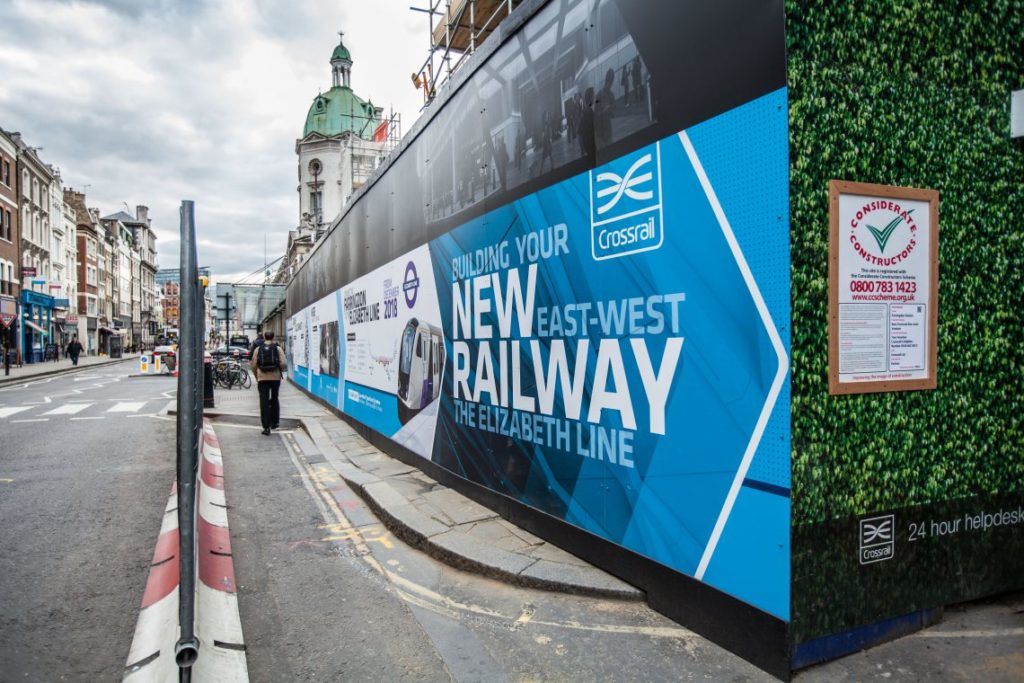

Making Sure Hoarding Cannot be Scaled or Causes an Obstruction
Fencing should be difficult to climb with no hand or footholds, and no gaps underneath. Flat-sided hoardings are more difficult to climb than mesh fences and prevent people from viewing the site. You should highlight fence posts in pedestrian areas to avoid tripping hazards with warning or barricade tape, Full barricades or hazard cones.
It is possible for you and your workers to add angled extensions, known as fans, to the top of the hoarding. This will make climbing difficult. Also, this will reduce litter and/or other missiles being thrown over which could potentially injure your site workers.
Securing the Site Against Intrusion and the Weather
Hoarding needs to withstand strong winds and all types of weather, so it is important to consider the wind load when choosing materials for your fencing.
If wind loading is an issue, you need to provide adequate bracing, following manufacturer or supplier instructions. Do not place loads on the hoarding or fencing without re-assessing and determining its stability first.
This includes adding mounted lights or CCTV cameras. Debris netting and signs can also create an additional load and imbalance, so make sure everything has been accounted for and it is strong enough to hold everything.
Clips and bolts should have tamper-proof fixings, only available from the inside.
Provide secure gates at access points; gates should be the same size as surrounding hoarding and be part of the fence so you can control access through the gates.
The gate should be secure if open, and should not blow shut if there are strong winds. Gates should be closed when necessary - for example, in schools - or for internal security, but it shouldn’t hinder escape routes in an emergency.

Most hoarding rental companies supply and install gates for both pedestrian and vehicle access. Also, they might install vision panels, lighting, and access controls.
You should inspect the gates regularly, and repair when needed or modify access as the site requirements change.
What Hazards Could Affect the Public?
Even if there is hoarding securing the site, sometimes falling objects can fall outside of the site boundary so it is important to make sure objects can not fall outside of the boundary.
If you have scaffolding, use toe boards, brick guards, rubble shoots and netting to prevent debris accidentally falling into public spaces. Fans and covered walkways can cut down on these hazard risks too.
When there are delivery and site vehicles moving in and out of the site, ensure vehicles coming and going can not affect pedestrians or other traffic - use a banksman if in any doubt.

During deliveries, large vehicles can obstruct the pavement forcing pedestrians to walk on the road. Do not block walkways for longer than is absolutely necessary as this causes undue hazards and risk to the public.
Secure building materials, safety equipment, and plant machinery in compounds away from perimeter fencing, ensuring it is not within reach off-site and preferably out of view completely.
Erect barriers and place covers on excavations, manholes, stairwells, and open floor edges to prevent trips and falls.
Conclusion
Make sure everyone on site is safe by wearing the correct PPE and that all personnel and workers consider the public impact of building sites.
Also, workers need to take extra care to make sure the hoarding and fencing protects the public from internal hazards and dangers.
Security personnel should take extra precautions to not grant unauthorised access.
Hoarding needs to meet the correct regulations by protecting the public to a reasonable measure and keep unauthorised people off the construction site and out of harm's way.
Do you know the regulations concerning the hoardings around areas of construction work? The hoarding on building sites – temporary wall-like structures that are built around the perimeter of the site – are covered by site hoarding regulations. They are designed to shield the site from the view of the public and prevents unauthorised access, […]
There are several types of gloves available to purchase for a reason. You should avoid making the mistake of assuming that any type of glove can be used for any type of work you undertake, as this can bring its own set of dangers. That's why gloves are rated into three separate categories and all come under different standards - they all depend on your situation. Here's how to pick glove ratings in line with EN-standards.
There Are 3 Top-Level Categories Of Gloves
- Category One (1) - Minimal Handling Risk
- Category Two (2) - Intermediate Handling Risk
- Category Three (3) - High Level of Risk
Protective gloves can be divided into three categories, depending on the type and which danger or risk the gloves should be protecting against.
Gloves designed for minimal risks are placed in category one. Gloves designed to be suitable for intermediate risks are placed in category two. Gloves that are designed to protect against the highest levels of risk, such as corrosive acids, high heat and [something] are placed in category three.
However, the EN standards can be broken down further.
Before looking in depth at the standards, here's the recommended glove for each respective standard and which kind of roles they're best suited for:
Standard Recommended Glove Ideal For
EN 420 Portwest Canadian Rigger Glove Drivers and Riggers
EN 388 Portwest Cut 5 PU Palm Glove Cut-resistance
EN 407 Portwest Welders Gauntlet Welding and thermal hazards
EN 12477 Portwest Ambi Dex Welding Gauntlet Welding and mechanical hazards
EN 374 Portwest Nitrosafe Chemical Gauntlet Chemical, oil and food industries
EN 511 Portwest Antarctica Insulatex Glove Operating in cold temperatures
EN 10819 Portwest Anti Vibration Glove Dealing with power tools
And here's a breakdown of each standard in more detail...
EN 420 This standard defines the general requirements for protective gloves in terms of construction, fitness of purpose, safety etc. The pH of the gloves should be as close as possible to neutral. The gloves themselves should not impose a risk or cause injury. Gloves must feature specific details This standard is seen as the benchmark of safety - all safety gloves must earn this standard first. Not every glove will have EN 420 as an accolade as it consists of fairly commonsense specifications. Leather gloves should have a pH value between 3.5 - 9.5. Recommended glove: portwest canadian rigger glove
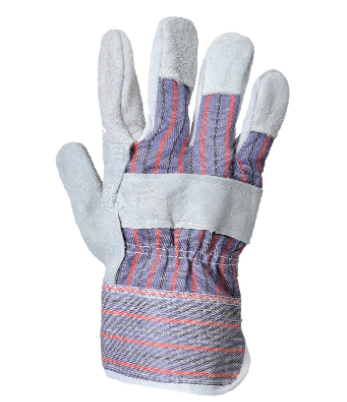
Portwest Canadian Rigger Glove
A popular leather style which features vein protection. The cotton backing increases comfort and ventilation. Ideal for drivers and riggers.
EN 388 These are gloves which provide protection from mechanical risks. Protection against hazards is represented by four numbers, each one representing test performance against specific hazards. 1 - Resistance to abrasion. Based on the number of cycles required to abrade through the gloves. Protection factor is indicated on a scale of 1-4 depending on how many revolutions are required to make a hole in the materials. 2 - Blade cut resistance. Based on the number of cycles required to cut through glove at a constant speed. Protection factor is indicated on a scale of 1-4. 3 - Tear resistance. Based on the amount of force required to tear the sample. Protection factor is then indicated on a scale of 1-4. 4 - Puncture resistance. Based on the amount of force required to pierce the gloves. Protection factor is indicated on a scale of 1-4.

Image Credit: Cut Safe
RECOMMENDED GLOVE: PORTWEST CUT 5 PU Palm glove
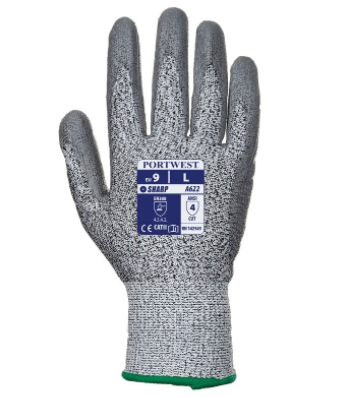
Portwest Cut 5 PU Palm Glove
This glove offers maximum protection against cuts and sharp objects. Ideal for workers searching for cut-resistant gloves.
EN 407 Gloves under this standard have been tested under six different tests designed to cover a range of threats. The higher the number in each test, the better the result. This standard is used to determine the level of protection that gloves have against a number of thermal hazards. Test #1 - The resistance to flammability. Test #2 - The resistance to contact heat. Test #3 - The resistance to convective heat. Test #4 - The resistance to radiant heat. Test #5 - The resistance to small splashes of molten metal. Test #6 - The resistance to large splashes of molten metal. RECOMMENDED GLOVE: PORTWEST Welders gauntlet
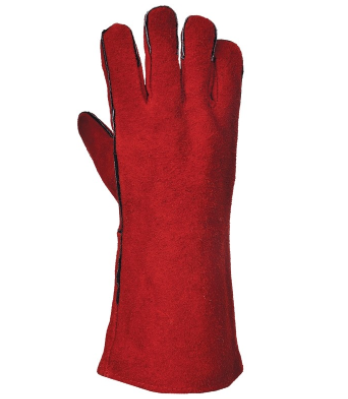
Portwest Welders Gauntlet
This style is ideal for workers who work in welding or operate under any other thermal hazards.
EN 12477 This standard describes how the gloves are designed to provide protection for both hands and wrists while welding or similar work. This standard is a combination of testing EN 388 and EN 407. Gloves under this standard will provide resistance to small splashes of molten motel, short exposure to convective heat, radiant heat and contact heat along with mechanical risks. Type A refers to gloves which provide higher protection against heat. Type B refers to gloves which provide lower protection against heat, but are more flexible. RECOMMENDED GLOVE: portwest ambi dex welding gauntlet
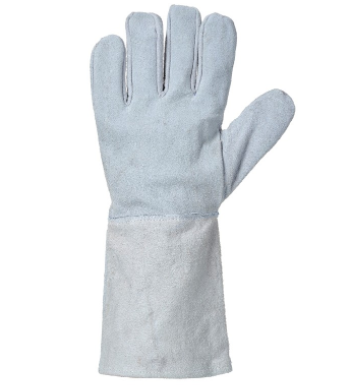
Portwest Ambi Dex Welding Gauntlet
This ambidextrous workers glove offers thermal protection to welders or against any other thermal and mechanical hazards.
EN 374 Gloves under this standard give protection from chemicals and micro-organisms. These gloves are tested and approved chemical gloves to withstand over 15,000 different chemicals and over 60,000 products in various industries. In order to pick the safest glove, you must find out the names of chemicals you will work with and how long you will be in contact with said chemicals. Gloves tested for this standard must be liquid-proof and can't be penetrated when undergoing an air or water leak test. RECOMMENDED GLOVE: PORTWEST nitrosafe chemical gauntlet
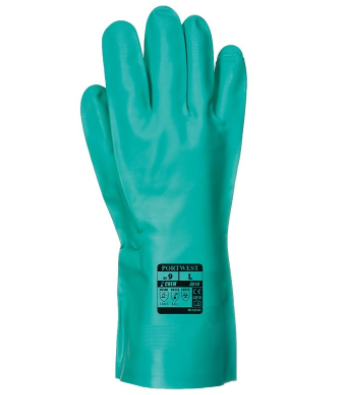
Portwest Nitrosafe Chemical Gauntlet
Ideal for workers look for a glove with enhanced grip. Recommended for use in the chemical, oil and food industries.
EN 511 These gloves are designed to provide protection from cold. Two things are measured with the glove: how the glove's material leads cold and the material's insulating capacity. The gloves' pictogram will show either a 0 or a 1. 0 indicates that the gloves suffer from water penetration after 30 minutes while a 1 indicates the gloves suffer from no water penetration after 30 minutes. The higher performance level of the glove, the better the insulating capacity. RECOMMENDED GLOVE: PORTWEST Antarctica Insulatex Glove
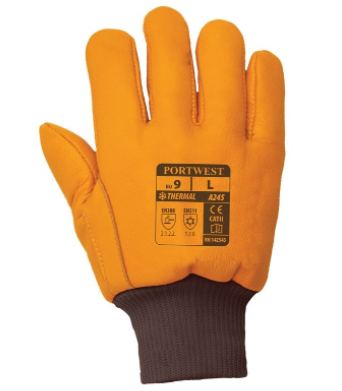
Portwest Antarctica Insulatex Glove
This glove features premium quality cow grain leather with Insulatex lining for enhanced warmth. This is the ideal style for coldstore applications and workers operating in cold temperatures.
EN 10819 Gloves under this standard provide protection from vibration. The standard implies that gloves shouldn't enhance vibrations with a moderately strong frequency (31.5 Hz to 200 Hz). When there's a high frequency (200 Hz to 1250 Hz), the gloves will reduce the levels of vibration by 40%. RECOMMENDED GLOVE: PORTWEST anti vibration glove
Portwest Anti Vibration Glove
This glove is specifically designed to reduce the effects of impact and vibration. Ideal for workers operating with power tools, jackhammers, concrete breakers and more.
By following and understanding the above standards and glove ratings, you're able to put yourself in a much better position when it comes to purchasing gloves that will keep you safe from specific hazards.
There are several types of gloves available to purchase for a reason. You should avoid making the mistake of assuming that any type of glove can be used for any type of work you undertake, as this can bring its own set of dangers. That’s why gloves are rated into three separate categories and all […]
When workers work at heights there are always risks of falling. Construction has the highest fatalities of any industry, and deaths often resulted from falling from heights, which is why employers must adhere to all regulations for working at height. The Work at Height Regulations came into effect in 2005 to prevent workplace deaths and accidents. In this blog post, we discuss the eight regulations for Working at Height in plain language.

Photo credit: Boris Zhigun via Visual Hunt / CC BY-NC-SA
What do the regulations say?
For working at heights there are regulations that stipulate employers need the following...
Requirements for existing places of work and means of access or egress at height. Requirements for guard-rails, toe-board, barriers, and similar collective means of protection. Requirements for working platforms. Requirements for collective safeguards for arresting falls. Requirements for personal fall protection systems. Requirements for ladders. Particulars to be included in a report of inspection. Okay, so what does that actually mean?
Here are the 8 regulations (called schedules) for Working at Height: explained in plain language...
Schedule 1: Requirements for existing places of work and means of access or egress at height. The place where workers stand should be rigid enough and strong enough for its intended purpose. It should hold any people and materials needed to get the job done. The structure should rest on a stable surface that’s strong enough to hold it - where applicable. Basically, if the structure is scaffolding, the ground below needs to be stable enough to hold the scaffolding, the people on it, and the materials on the scaffolding (the wood or bricks used, etc).
 image credit
image credit
The structure should have sufficient dimension (be big enough) to allow people to pass across each other’s paths safely, and should allow for materials to be used safely in the area (provide a safe working area). In other words, if it’s scaffolding for bricklaying, can the area support the workers laying bricks, the bricks themselves, and allow for safe passage from one end of the scaffold to the other without causing harm to anyone? The structure needs to have sufficient support to prevent falling. “Sufficient support” can count as kick boards or railings or any other protective measures on scaffolding, for example. The structure needs to have a surface without gaps which a person could fall through or an object could fall through that could injure someone below. So, if it’s scaffolding, the boards need to be close together not to cause harm or injury, so that a brick, for example, couldn’t fall below and hit someone or the person above cannot trip or fall between boards. The structure needs to be constructed, used, and maintained in a condition that prevents slips, trips, and falls that stops people being caught between the structure and the building (being worked on) or - if it has moving parts - those parts need to be prevented from moving in a way that can cause harm when workers are working at a height. Basically, if it’s scaffolding, it needs to be inspected for safety, there needs to be measures in place so people don’t slip or get trapped between the scaffolding and the building, and if there are moving items on the scaffolding, they need to be secured for safety when not in use. Schedule 2: Requirements for guard-rails, toe-board, barriers, and similar collective means of protection. This section discusses the requirements for guard-rails, toe-boards, barriers, and other protective means to protect workers who work at heights. Protection should have the right dimensions, strength, and rigidity for intended purpose. It should be placed and secured so that it cannot accidentally become displaced (get moved) and open itself up to hazards. It should also be placed to prevent workers or objects from falling. For construction, there needs to be a top guard-rail or other protection that is at least 950 mm (or 910 mm for existing structures) above the edge from which anyone could fall.
 image credit
image credit
Toe boards should be high enough so that a person or object cannot fall from the height, and guard-rails should provide similar protection, and each gap should not be more than 470 mm (see image above). All structures intended for protection should provide protection, be strong enough, and be attached securely. For example, if a person was to fall against the guardrails and toeboards in the image above at force, the guardrails and toeboards shouldn’t break or falter and should protect the worker and objects on the scaffolding from falling.  image credit
image credit 
There should not be any side openings (lateral openings) on the structure except at entry points such as where there is a ladder or stairway and the opening is necessary. The protective measures should only be removed for the amount of time it takes to enter the scaffolding from the opening (ladder or stairway), and replaced as soon as possible. No tasks should be performed when the protective measures are open except in cases where other safety measures are in place that would ensure no harm would come to workers. Basically, if there’s a doorway, work should pause as people are entering and exiting, and the safety measures should be replaced when a person has finished entering or exiting (see images above).
Schedule 3: Requirements for working platforms.
Part 1: Requirements for all working platforms All platforms must be stable enough and strong enough to handle people, objects, tools, and anything else they must support. All platforms need to be strong enough for their intended purpose. For wheeled structures, items shouldn’t move by themselves (inadvertently) during working at height. Moving objects should be attached to a bearing surface or another structure and not be slippery. All platforms should be stable when they are being constructed and dismantled. They should always be dismantled in a way that will not allow for displacement (movement) that could harm someone. If platforms are altered or modified, they need to remain stable when modified or altered. Working platforms should be safe enough to allow people and people carrying objects to pass each other safely. The platforms shouldn’t have gaps where people or objects could fall, causing injury or risk. When constructed, platforms should be maintained in their original condition and should not be slippery or allow for people being caught between structures. Any platforms should not be overloaded as to risk collapse or deformation (warping, bending, etc) that would make it unsafe for workers to use.
Part 2: Additional Requirements for scaffolding Calculations for strength and stabilities need to be made unless calculations are already available, or the scaffolding is assembled conforming to generally recognized standard configurations. Depending on the complexity of the scaffolding, there should be a use and dismantling plan drawn up by a qualified (competent) person. The plan may be standard with supplemented items relating to specific details of the new scaffolding structure. A copy of the plan and instructions should be available for those who are assembling, dismantling, or altering the scaffolding up until the point it is completely deconstructed and taken down. The dimensions, form, and layout of the scaffolding decks need to be appropriate for the work that will be done, the loads, and allow for safe passing. There should be health and safety signs in place when the scaffold cannot be used, during assembly, alteration, or dismantling, and the area should be barred to prevent access to the danger zone. A supervisor must be present for any assembly, dismantling, or alteration to the scaffolding, and that person should be competent, have appropriate training, and address specific risks associated with the action. During assembly, alteration, or dismantling of scaffolding, the supervisor needs to understand any plans being carried out, provide safe conditions during the work, use measures to prevent people or objects falling, provide safety measures for weather changes, calculate the permitted loads (how much load the scaffold can take when it’s not fully built), and asses any other risks that the action may pose. Basically, someone should be responsible for the safe construction and dismantling of the scaffolding itself.
Schedule 4: Requirements for collective safeguards for arresting falls.
Safeguards should be used if a risk assessment finds that the work can be done safely using the safeguard without compromising its effectiveness. Safeguards should be used if other safer work equipment cannot be used. Safeguards should be used if enough people have received training on that safeguard, including rescue procedures. Safeguards need to be suitable and strong enough to stop falls of any people likely to fall. For safeguards that need to be attached to something, they need to be attached to required anchors, and the attachment should be strong and stable enough to provide safety even if that person adds a load. The safeguard should prevent falls and allow for rescue. Think of a safety harness here. It should be attached securely and be able to carry the load of the person wearing it plus any equipment that may be worn and in hand. For safeguards like airbags, landing mats, or other such safeguards, they need to be stable and have enough clearance - for objects that distort when they stop falls. In other words, if the object on which someone will fall will spread out, there needs to be enough room for it to spread out. Safeguards shouldn’t cause injury to people if they fall.
Schedule 5: Requirements for personal fall protection systems.
Part 1: Requirements for fall protection systems Personal fall protection systems should only be used if the risk assessment shows that the work can be performed safely when using the system, and other safer equipment isn’t practicable. The users of the protection systems need to be trained on how to operate these systems and how to rescue people who have fallen. Personal fall systems need to be suitable and strong enough, even for added load. If the fall protection needs to be fitted, it needs to be fitted properly, designed to minimise injury to the user, adjusted to prevent falls or slips, and be designed to prevent falls even in the event of unexpected and uncontrolled movement of the person. Fall protection systems need to have secure anchors and be attached to at least one anchor and that anchor needs to be strong and stable and able to carry additional load. No one should be able to fall from tripping over or slipping over a personal fall protection system.
Part 2: Additional requirements for work positioning systems Work positioning systems should be used only if the system has enough backup to prevent falls, and when there’s a line as a backup and the user is connected to it. Part 3: Additional requirements for role access and positioning techniques Rope access or positioning techniques should be used only when there are two separately anchored lines where the working line is used for access and support and the other is used as a safety line.
 image credit
image credit
The user has to have a suitable harness that’s connected to the working and safety lines. The working line needs a safe means of ascent and descent (up and down movement), and there needs to be a self-locking system to prevent falls if the user loses control of his movements. The safety line needs a mobile fall protection system which travels with the user in case of a fall. The risk assessment needs to be taken into account, depending on the job and ergonomic (efficiency and comfort in the workplace) constraints. The system may have a single rope when the risk assessment determines that the second line would create a higher risk to people, or other appropriate safety measures are in place. Part 4: Additional requirements for fall arrest systems Fall prevention systems need to absorb energy and limit force applied to the user’s body. Fall prevention systems shouldn’t involve risk to a line being cut. There should be a clear zone - for a pendulum effect (where the person swings back and forth from side to side on a harness, for example) - which doesn’t inhibit work or make the area unsafe. Part 5: Additional requirements for work restraint systems A work restraint system needs to be designed, if used correctly, to prevent the user from getting in a position where the user can fall, and it needs to be used correctly.
Schedule 6: Requirements for ladders.
All employers should ensure ladders are used for working at heights only if a risk assessment has shown that using more suitable work equipment isn’t justified because of low risk, short time of use, or features that exist on site that can’t be altered.
The surface the ladder rests on should be stable, be strong enough, be firm, and be of appropriate composition (for example, soil, concrete, etc that’s strong enough to hold the ladder securely) to support the ladder, the person, and the load, and so the rungs remain horizontal. Ladders should be positioned to ensure stability during use. Suspended ladders should be attached securely so it can’t be displaced or swing - with the exception of flexible ladders. Portable ladders should be prevented from slipping by securing sites at or near the lower and upper ends, by using anti-slip or stability devices, and by other arrangements that provide equivalent effectiveness and protection. Access ladders should be long enough to protrude above the landing place it provides access to unless other measures have been made to make sure there’s a firm handhold. Basically, when using ladders at entrances, they need to be long enough to allow the person using them to enter the workspace safely. Interlocking and extension ladders shouldn’t be used unless its sections cannot be moved relative to each other when in use. Before they are used, any mobile ladders should be secured so they don’t move at all when in use. For any ladder or run of ladders that rise above 9 metres (30 ft) above their base, there should be safe landing areas or rest platforms at intervals, where reasonable. All ladders should be used in a way that there are always secure handholds and supports for the user; the user should be able to maintain those safe handholds when carrying a load, except in cases of step ladders, handholds are unable to be used (not practical); or when the use of a stepladder is justified because of low risk or short time used.
Schedule 7: Particulars to be included in a report of inspection.
Inspection reports to do with working at heights need to detail the following:
The name and address of the person or company that requested the inspection. The location of the work equipment that was inspected. A description of what work equipment that was inspected. The date and time of the inspection Details of matter identified that could cause a health or safety risk to any workers. Details of action taken to reduce or eliminate the risks identified. Details of any further actions that are considered necessary to eliminate the identified risks (in points 5 and 6). The name and the position of the person who carried out the inspection and made the report.
Schedule 8: Revocation of Instruments
In this section, certain regulations have been cancelled. To find out which ones, visit this link.
This schedule applies to certain Shipbuilding and Ship-Repairing Regulations (1960, 1983), Dock Regulations (1988), Fishing Vessel Regulations (1988), Workplace Health and Safety Welfare Regulations (1992), and The Construction Health and Safety Regulations (1996).
How do companies comply with these regulations? Employers have a duty that work should be... Properly planned Supervised Carried out by competent people Workers must use the correct equipment for the job Risks must be assessed first - low-risk jobs will be easier to plan, for example, than high risk ones. Employees...
Have a legal obligation to be responsible and take care of themselves and others affected by their actions.
Must co-operate with their employer to comply with their health and safety duties and requirements.
Should report any safety hazards to their employer.
Need to use supplied safety devices and equipment in the correct manner, according to their safety training and instructions.
Must report if they think using equipment would be unsafe, and, if so, seek further instruction before continuing.
Protect your workers with the right PPE.
Make sure you’re PPE compliant and have ordered the right equipment, meeting the correct legislation by downloading our FREE PPE compliance checklist.
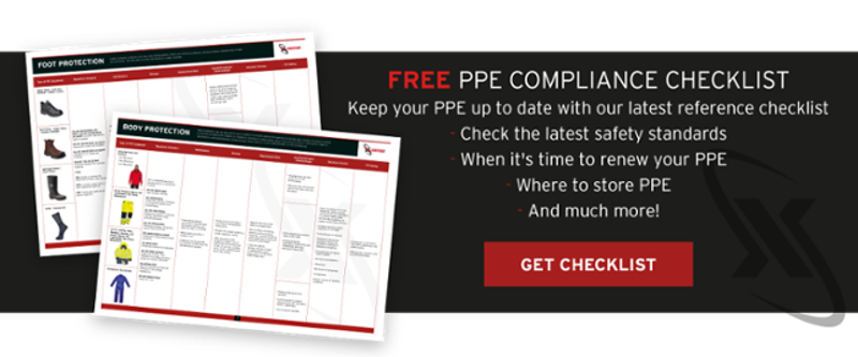
When workers work at heights there are always risks of falling. Construction has the highest fatalities of any industry, and deaths often resulted from falling from heights, which is why employers must adhere to all regulations for working at height. The Work at Height Regulations came into effect in 2005 to prevent workplace deaths and […]
There are over 15,000 potential signs that you can find in work places all over the UK. It is certainly an overwhelming number, but most signs offer mandatory protection.
Safety clothing PPE signs indicate when, where, and which type of PPE has to be used or worn on a particular site - safety footwear, ear protection, eye protection, Hi Vis clothing, and so on; these blue signs indicate the PPE is absolutely mandatory. They are always indicated as blue circles with white edging and white infographics. Most don’t need to be studied and can easily be identified.
Other signs you may see are prohibition signs that are edged in red with a red slash mark through the black infographic (such as a no smoking sign). Warning signs are yellow triangles edged in black with a black infographic. They indicate danger. Green signs indicate safe conditions. The most common sign is a green exit sign and they are rectangles on a green background with white infographics and arrows (pointing to the exit). These signs indicate escape routes, emergency exits, first aid equipment, emergency showers, and so on. Fire Fighting equipment signs are red rectangles or circles with white infographics. These signs show you where you may find fire fighting equipment.




But which signs go where on site?
Where do the signs go?
The blue mandatory PPE signs are placed in highly visible locations. They are often placed on a large “SITE SAFETY” sign near the entrance of work site. The sign will sometimes have the name of the site manager. The sign will indicate that the following must be worn to enter the site, and will sometimes be accompanied by yellow warning signs, depending on the on-site hazards. You’ll often see “Danger! Construction Site” signs too.
Examples of what these signs may look like on your jobsite:
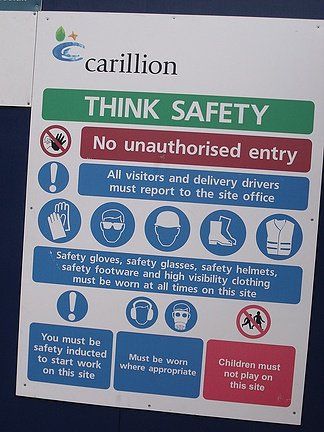
image credit
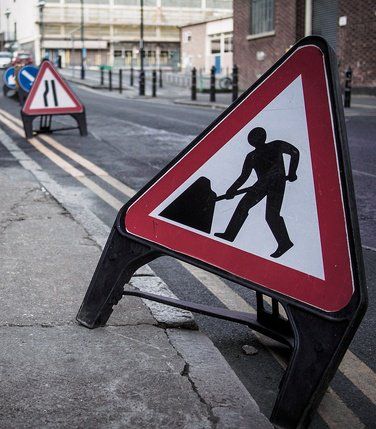
image credit
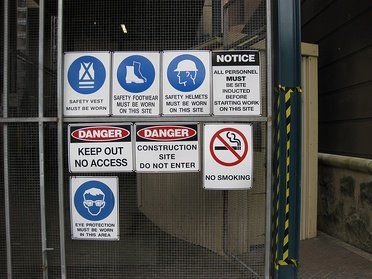
image credit
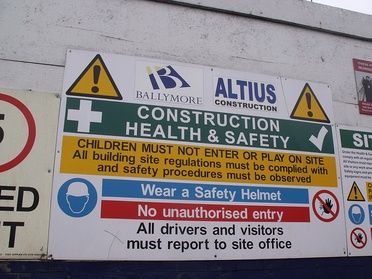
image credit
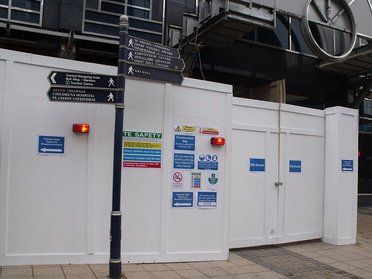
image credit
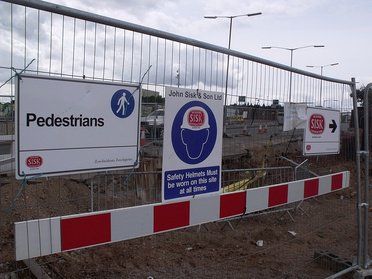
image credit
The sign can be blue with the blue circles edged in white, or sometimes they are yellow, but the infographic remains the same. They will usually say something like: “PPE required on this site,” “Full PPE must be worn,” “Follow standard precautions,” or “Wear personal protective clothing.” The signs will indicate which PPE should be used, and sometimes the name of the item will be listed next to or underneath the infographic for clarification.




What to do when you see the signs
All signs must be observed. If you enter the site, you must be wearing all PPE that the sign indicates to safeguard yourself from hazards. Failure to adhere to the sign’s warnings will endanger you unnecessarily. If you’re in doubt as to which PPE the sign indicates, ask your supervisor for clarification.
Your workplace will be aware of the new PPE regulations, and will ensure you are kept safe if you follow all required steps, so whether you’re told to wear a respirator, a hard hat, site safety boots, safety goggles, or all four, make sure you protect yourself and your health first.
Are the signs necessary?
Safety signs must be used by law if there is an avoidable hazard that can be protected against by using PPE; however, if PPE doesn’t reduce the risk, the signs are not necessary. Employers are required to explain any unfamiliar signs, and tell employees what to do when they see safety signs. Never be afraid to ask what you need to do to safeguard yourself.
There are over 15,000 potential signs that you can find in work places all over the UK. It is certainly an overwhelming number, but most signs offer mandatory protection. Safety clothing PPE signs indicate when, where, and which type of PPE has to be used or worn on a particular site – safety footwear, ear […]
Personal protective equipment is essential for anyone working in hazardous conditions, and it is a legal requirement that employers protect their employees from harm. Other safety measures should be introduced first to protect your employees and PPE used as a last resort.
Eye safety is paramount for those who work with glass, debris, chemicals, or mechanical parts that could break. As a result, you can prevent eye injuries by wearing the correct protective eyewear.
Sunglasses and/or prescription glasses are not suitable because these are not designed to protect eyes from splashes or impact. To help you choose the best protective eyewear for your job, here are some factors you need to consider and the four safety eyewear available.
- Page Contents
- What Are You Protecting Against?
- Types of PPE Eyewear You Can Use
- Safety Standards
- Lens Material
- Replacement Rates and Maintenance
- Fit Test
What Are You Protecting Against?
- Chemical or metal splash
- Molten metal
- Dust
- Projectiles
- Impact
- Gas and vapour
- Radiation
Types of PPE Eyewear You Can Use:
1. SAFETY SPECTACLES (CLEAR OR TINTED SAFETY GLASSES):
- Clear lens provides standard protection
- Amber lens removes blue light for low-light environments
- Grey and brown lens SCT protect from sun glare, UV rays, and impact
for outdoor use - Can have metal or plastic sides
- Prescription lenses available
- Side available for more than impact protection
Safety glasses are used for general eye protection and protect against flying objects. For instance when using in a laboratory, safety glasses need eye shields.
The safety rating means that the lenses are tested to withstand the impact of ¼” steel ball at 150 fps (feet per second).
Who uses them? Industries that need low impact protection, but not from smaller particles that can travel around the glasses.
2) GOGGLES / OVERSPECS:
- Encase the area surrounding eyes
- For areas with dust and airborne debris.
- Some have features such as anti-mist, anti-scratch lenses, and adjustable straps.
- Provide complete eye protection
- Can wear with glasses
- Only available in clear lenses
- May be rigid or flexible
Workers use overspecs when they need more than impact protection. When working in laboratories, manufacturing, and construction, these safety goggles are a must if the worker wears prescription glasses.
The goggles are available in direct, indirect, or non-ventilated types suitable for your requirements.
3) FACE SCREENS / FACE SHIELDS:
- Heat, chemical, and impact resistance without impairing vision
- Protect from flying fragments, objects, large chips, and particles
- Made from different transparent materials
- Vary in thickness
- Thickness corresponds with task
Face Screens are used as secondary protection with safety glasses or goggles. Therefore, it is important to know that they do not protect eyes from impact hazards.
Who uses them? Manufacturing industry, medical industry (for example, when exposed to infectious substances), police (riot protection), construction (debris or sparks), welding (metal spray).
4) VISORS / BROWGUARDS:
- Protects wearer from the front
- Visor fits into headband to shade or protect eyes
- Can be clear or tinted
- Can be attached to safety helmet
Who uses them: Industries with high-velocity impact, chemicals, and heat.
Visors and browguards are worn together and provide complete face protection from chemical splashes, molten metal, and high velocity impact (from cutting and grinding).
Note: The eye protection you choose must have the right combination of protection for the user and fit properly.
Eyewear Safety Standards
Here are some European Standards for Protective Eyewear EN:
(Exemptions for nuclear radiation, x-rays, laser beams, and low temperature infrared).
- 166: Requires eye protection in industries with potential eye hazards,
or anything likely to impair or damage vision. - 170 Ultraviolet filters.
- 171 Infrared filters.
- 172 Sun glare filters for industrial use.
- 175 Eye and face protection during welding.
Lens Material in Safety Eyewear
You will need to choose the protective eyewear you will need and consider the different lens materials.
Glass:
- Not easily scratched
- Can be heavy and uncomfortable
- Fog easily
Plastic:
- Lighter than glass
- Less likely to fog
- Not as scratch resistant
Polycarbonate:
- Lightweight
- Not likely to fog
- Stronger than glass or plastic
- More impact resistant
- Not as scratch resistant
Replacement Rates and Maintenance
Regardless of their condition, safety glasses should be replaced at least every three years. If they are damaged, scratched, pitted, broken, bent, or ill-fitting, they do not provide protection.
You can replace damaged parts with the original manufacturer parts only to ensure the same safety rating. Clean your protective eyewear daily following the manufacturer’s instructions.
For instance, to clean your safety glasses you can blow loose dirt and debris from the lenses; rinse under running water (with or without detergent); or use lens cleaning wipes or spray.
Most importantly, avoid rough handling as scratches impair vision and weaken lenses. Prevent this by storing your protective eyewear in cases or another clean, dry place to avoid scratching, falling, or being trodden on.
Safety Eyewear Fit Test
For safety glasses/goggles:
- Eye size, bridge size, and temple length vary; glasses should be individually fitted.
- Temples should fit comfortably over the ears.
- The frame should be as close to the face as possible with adequate support on the bridge of the nose.
- Choose based on colour of lens and comfort.
- Glasses / goggles should fit close to the face to minimise gaps.
- Find a style comfortable to wear.
For Visors and Browguards/Face Screens/Face Shields:
- Adjust browguard to fit comfortably but snugly on head (many come with
adjustable headgear)
Conclusion
The eyewear you should buy to protect your on-site employees depends on the hazards they face and their needs (comfort, fit, colour, and lenses). Above all, remember that it is better to over protect than under protect. If that means safety goggles and visors, then make sure that everyone’s eyes are shielded appropriately.
Personal protective equipment is essential for anyone working in hazardous conditions, and it is a legal requirement that employers protect their employees from harm. Other safety measures should be introduced first to protect your employees and PPE used as a last resort. Eye safety is paramount for those who work with glass, debris, chemicals, or […]









